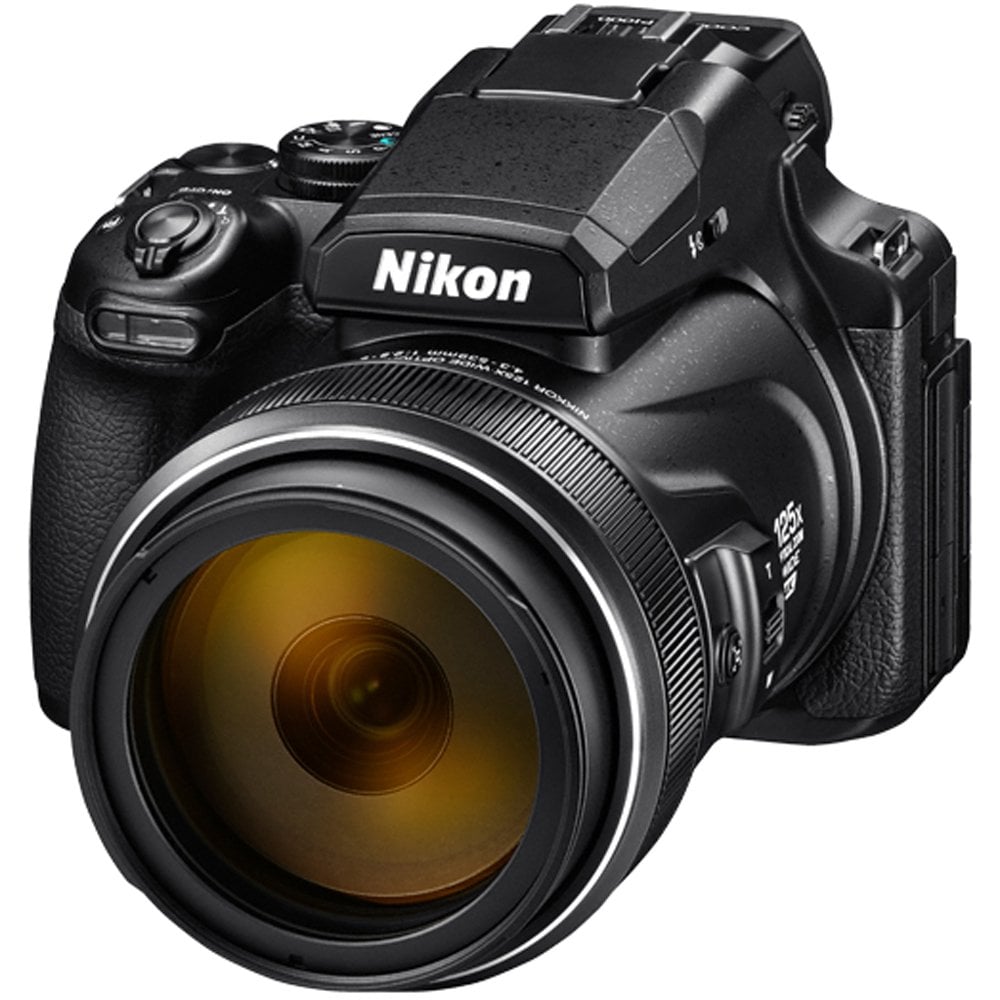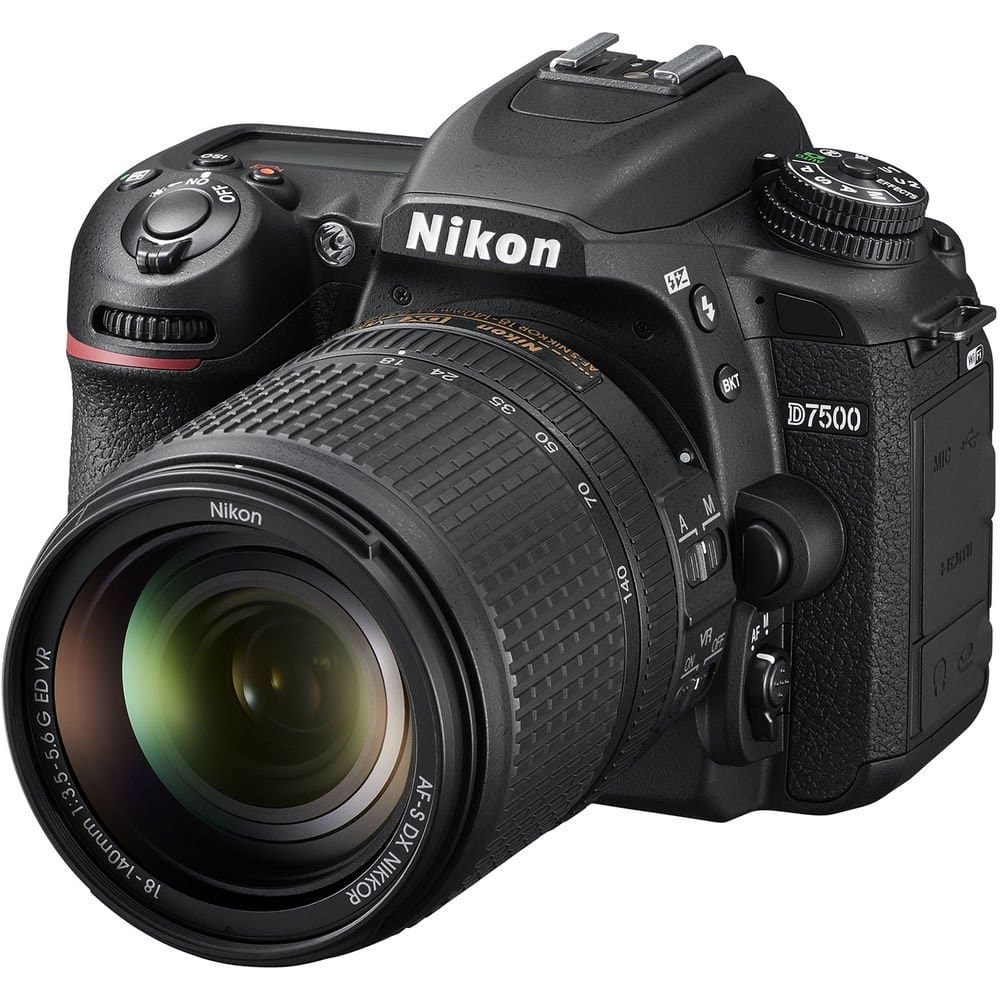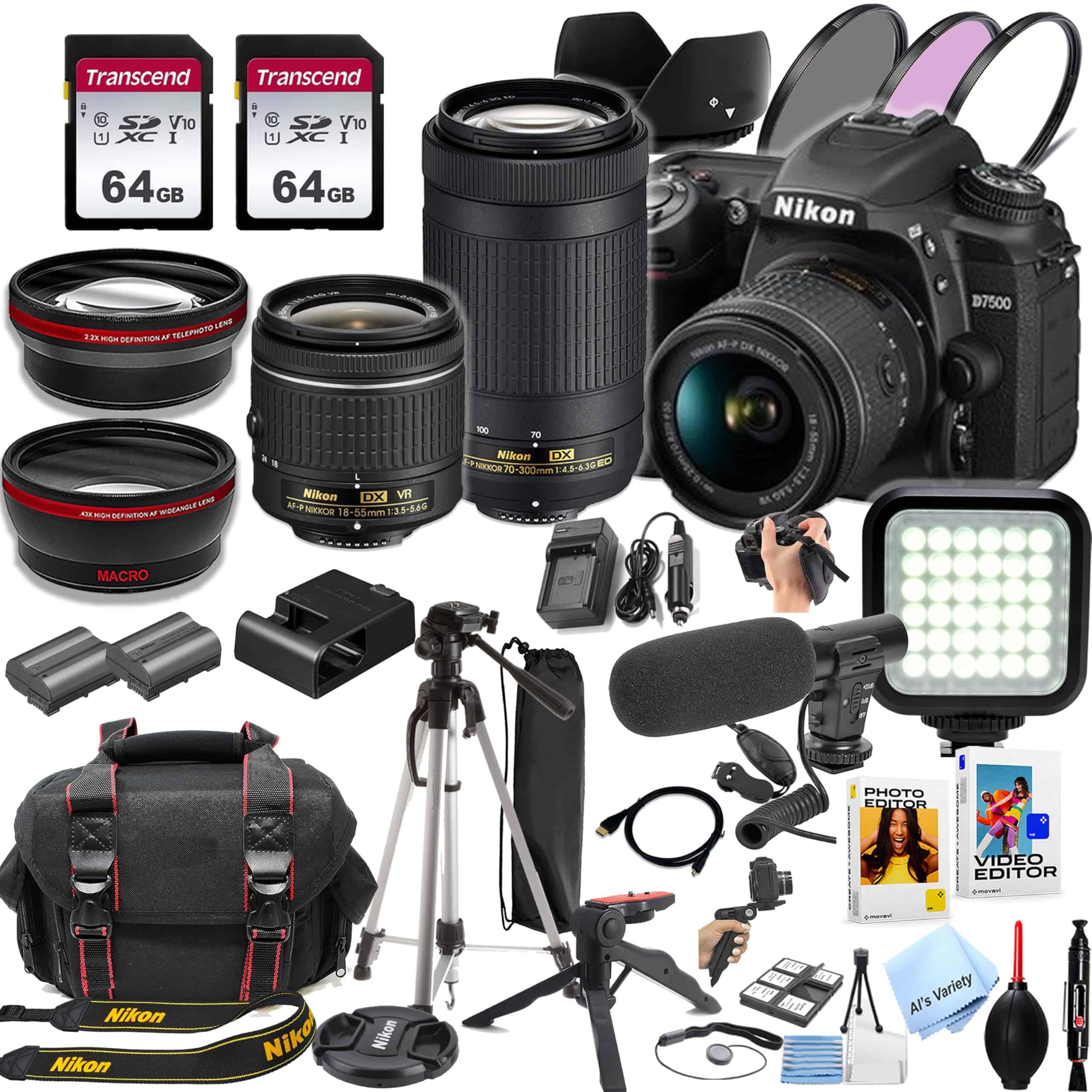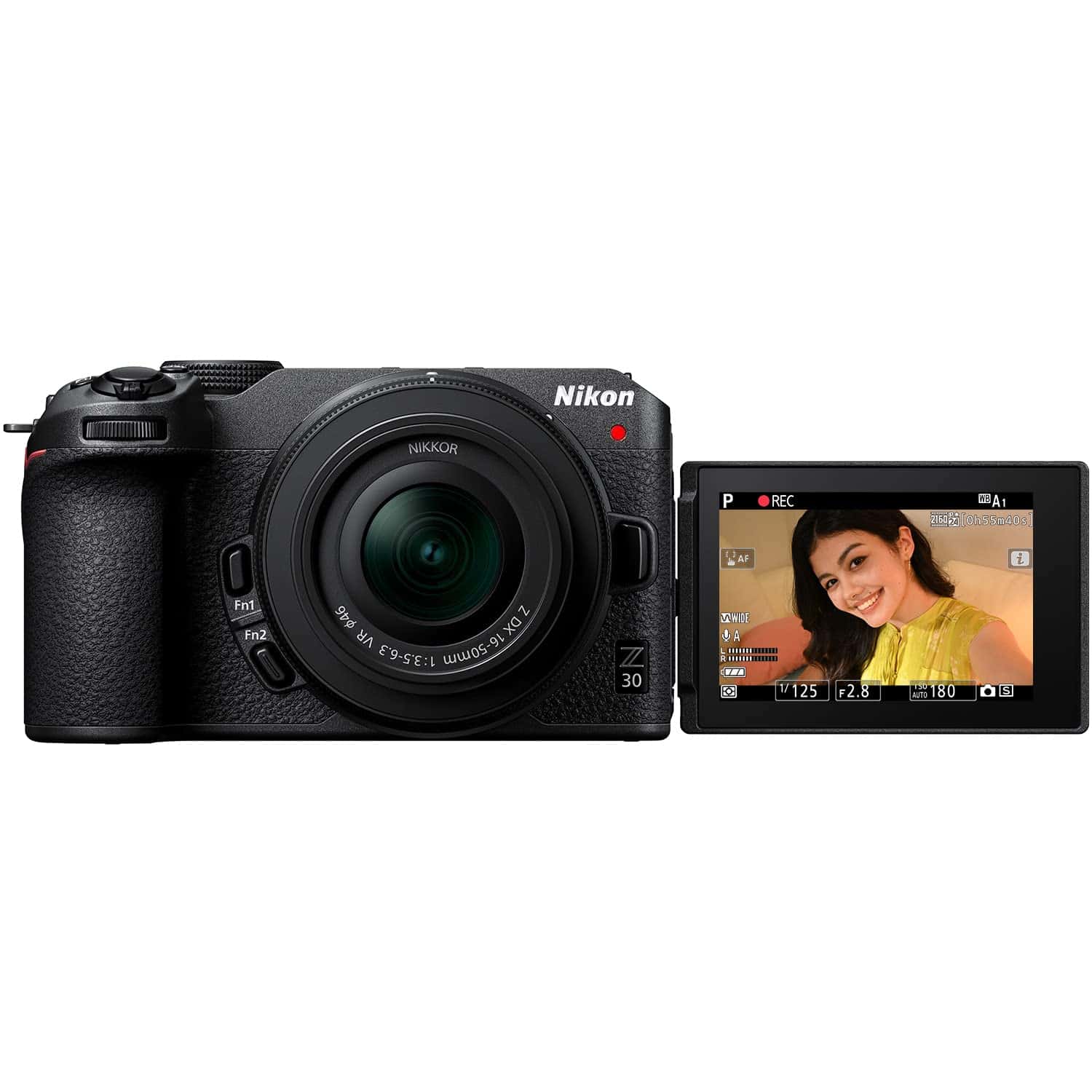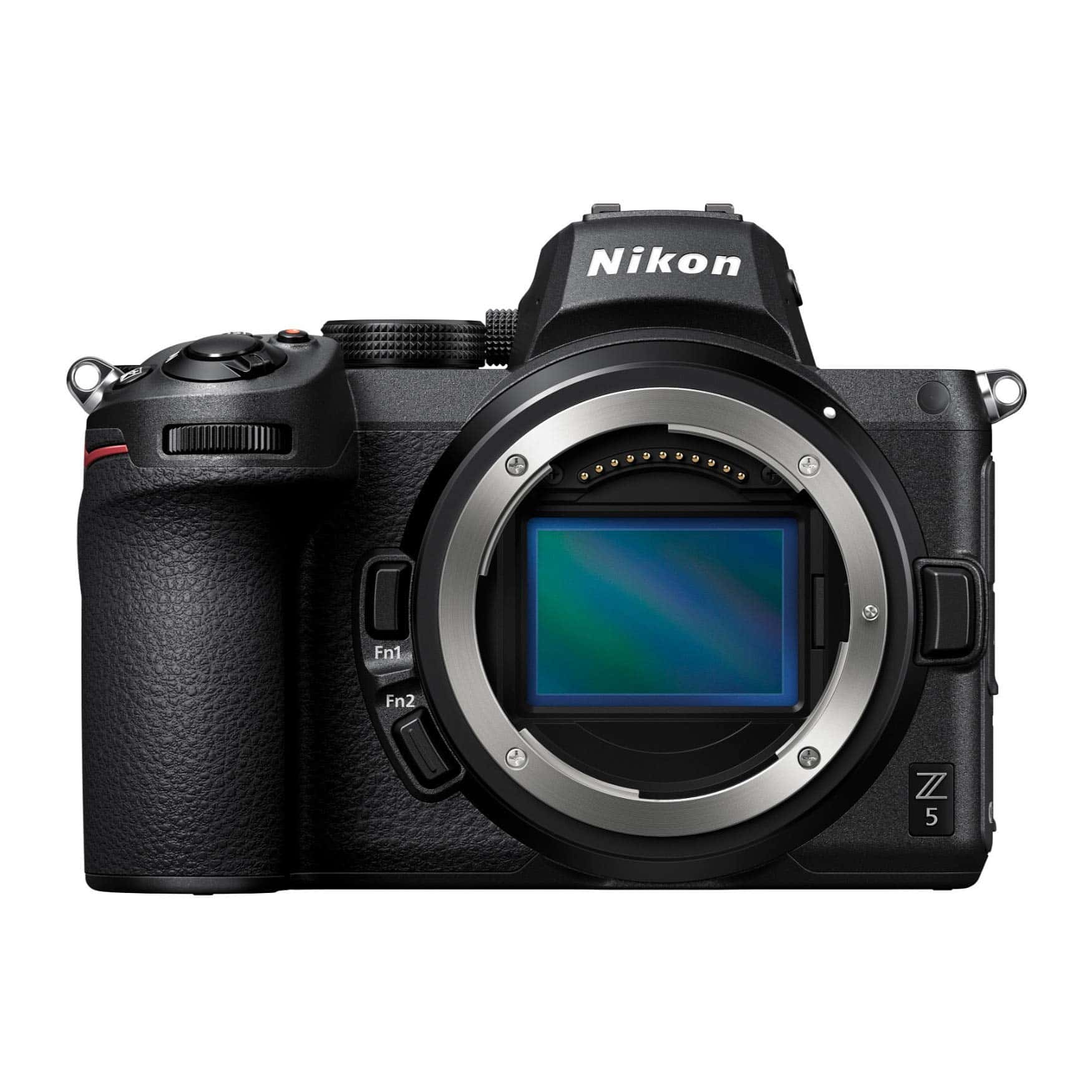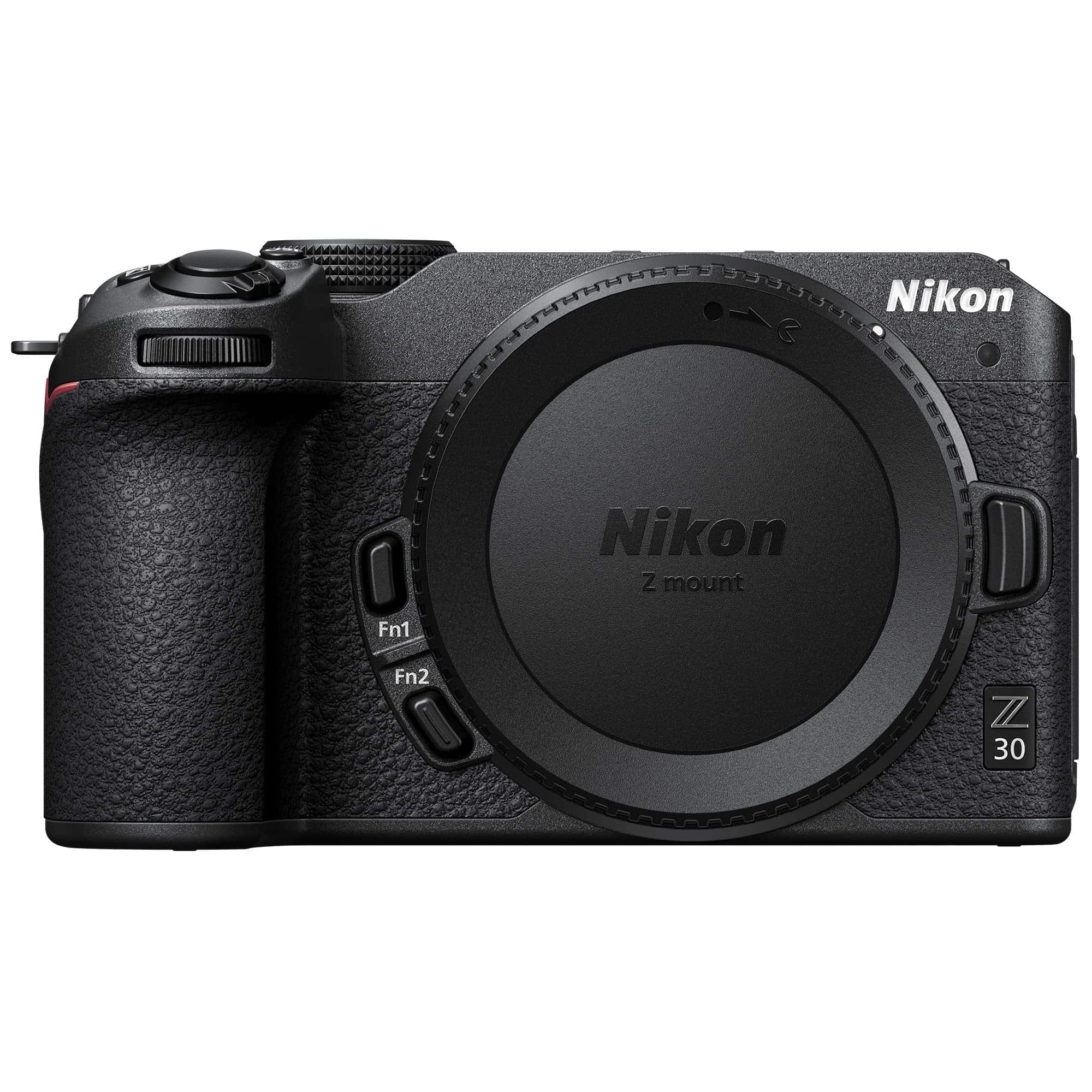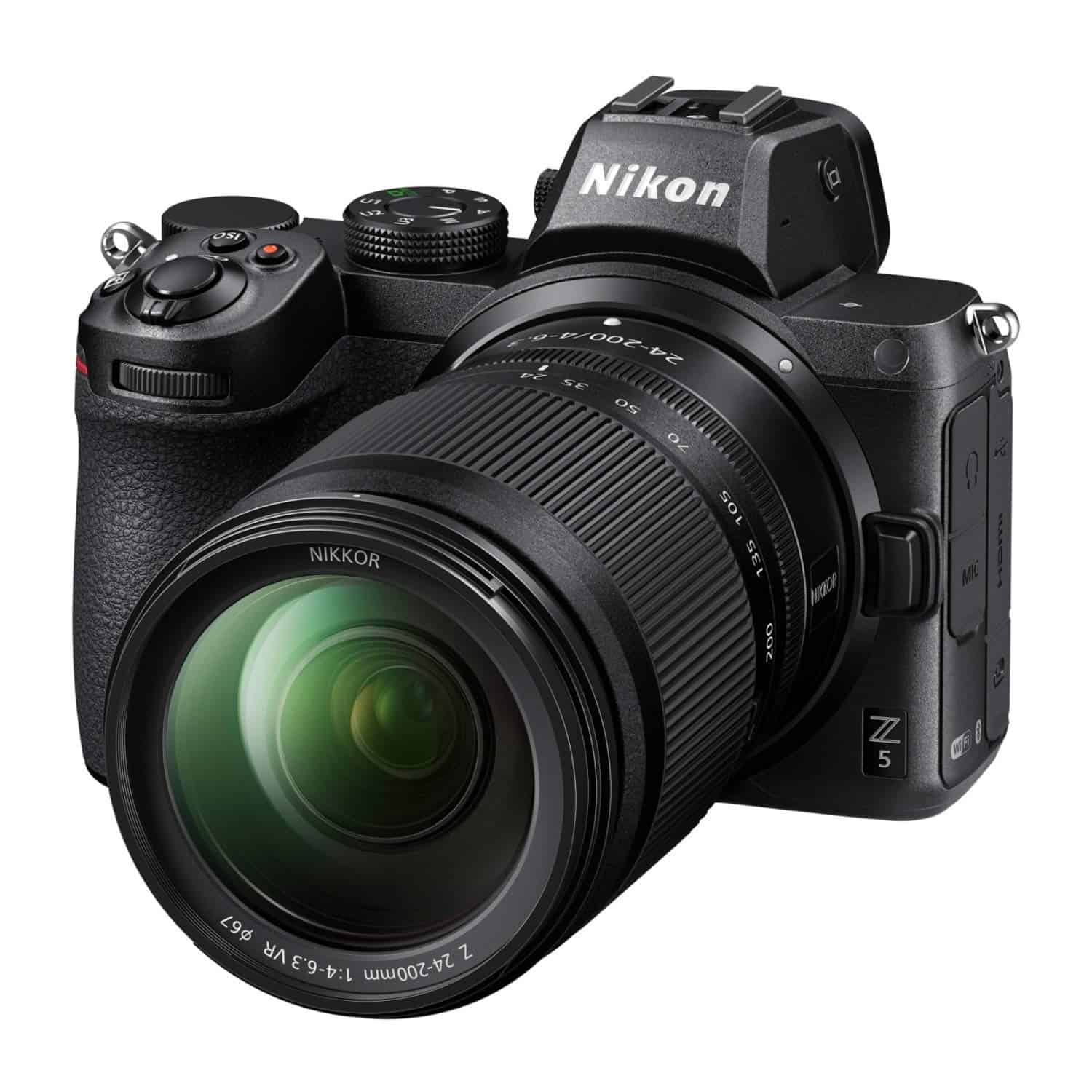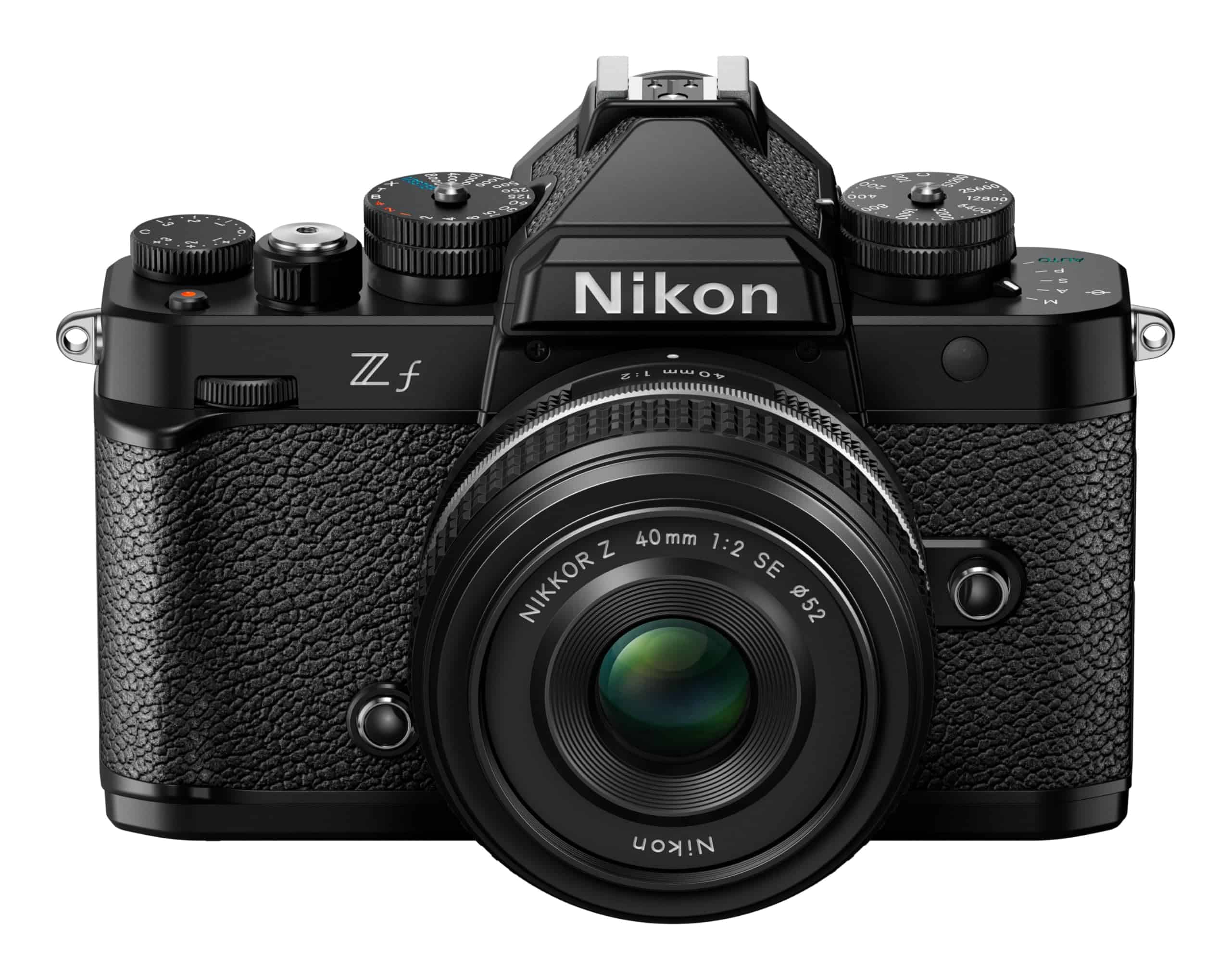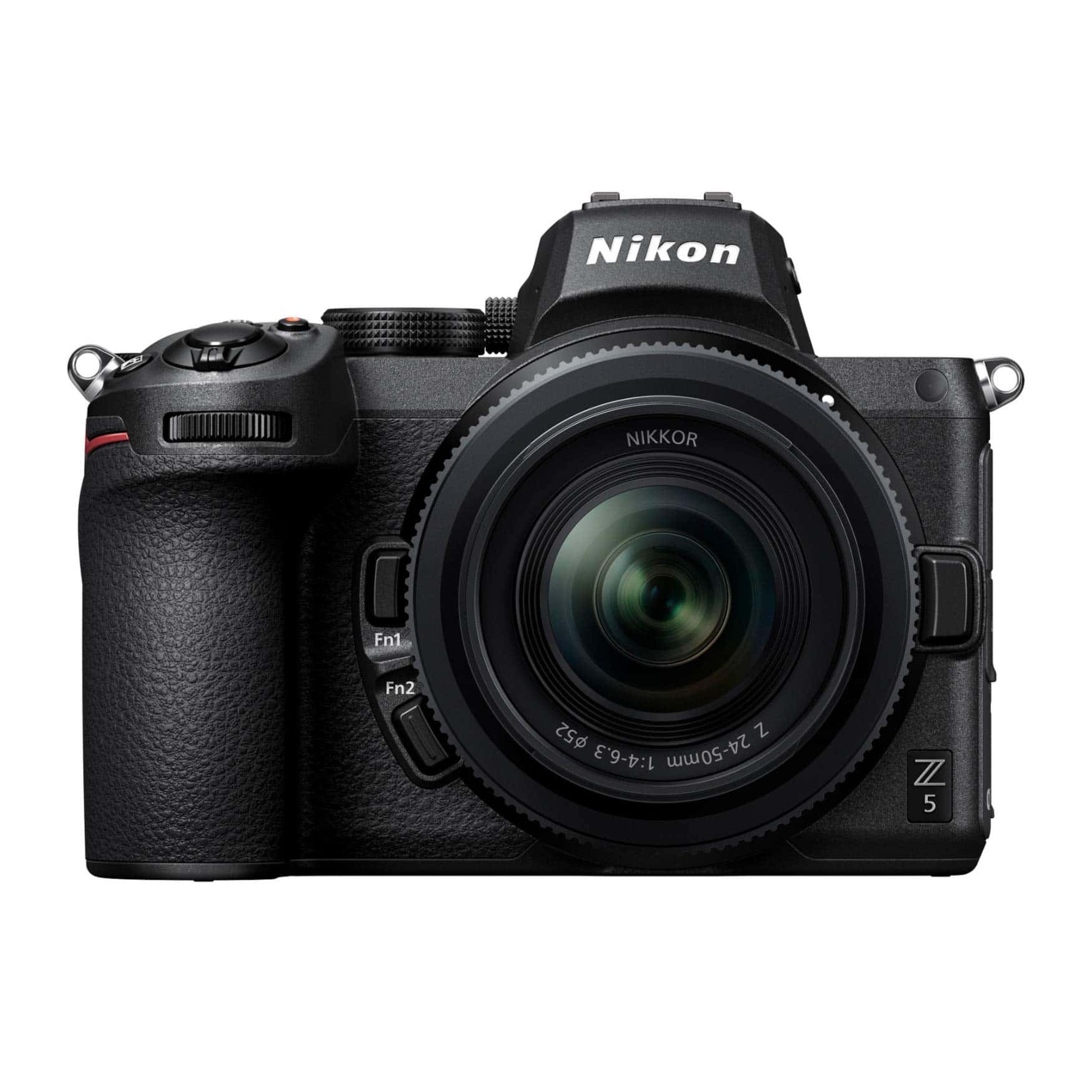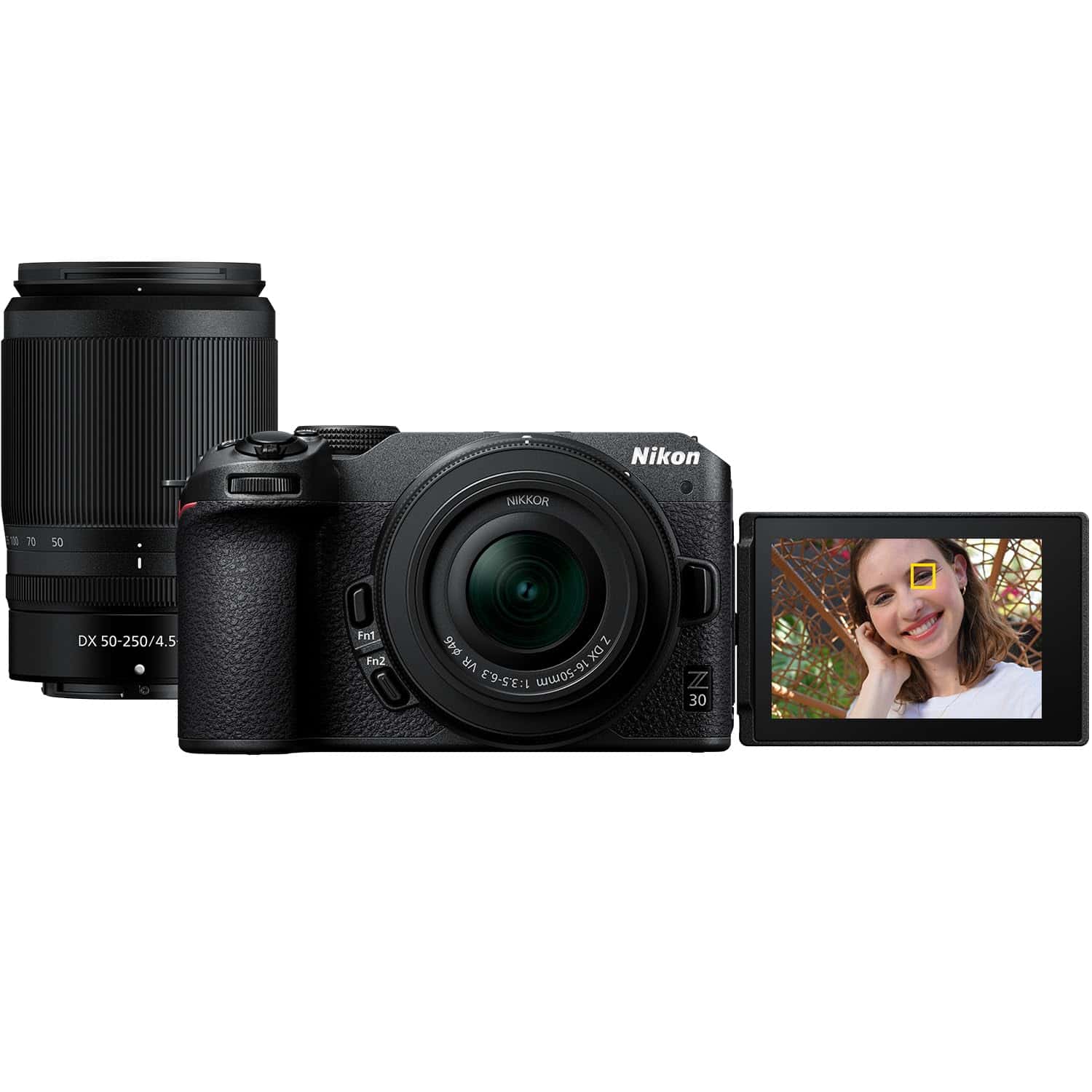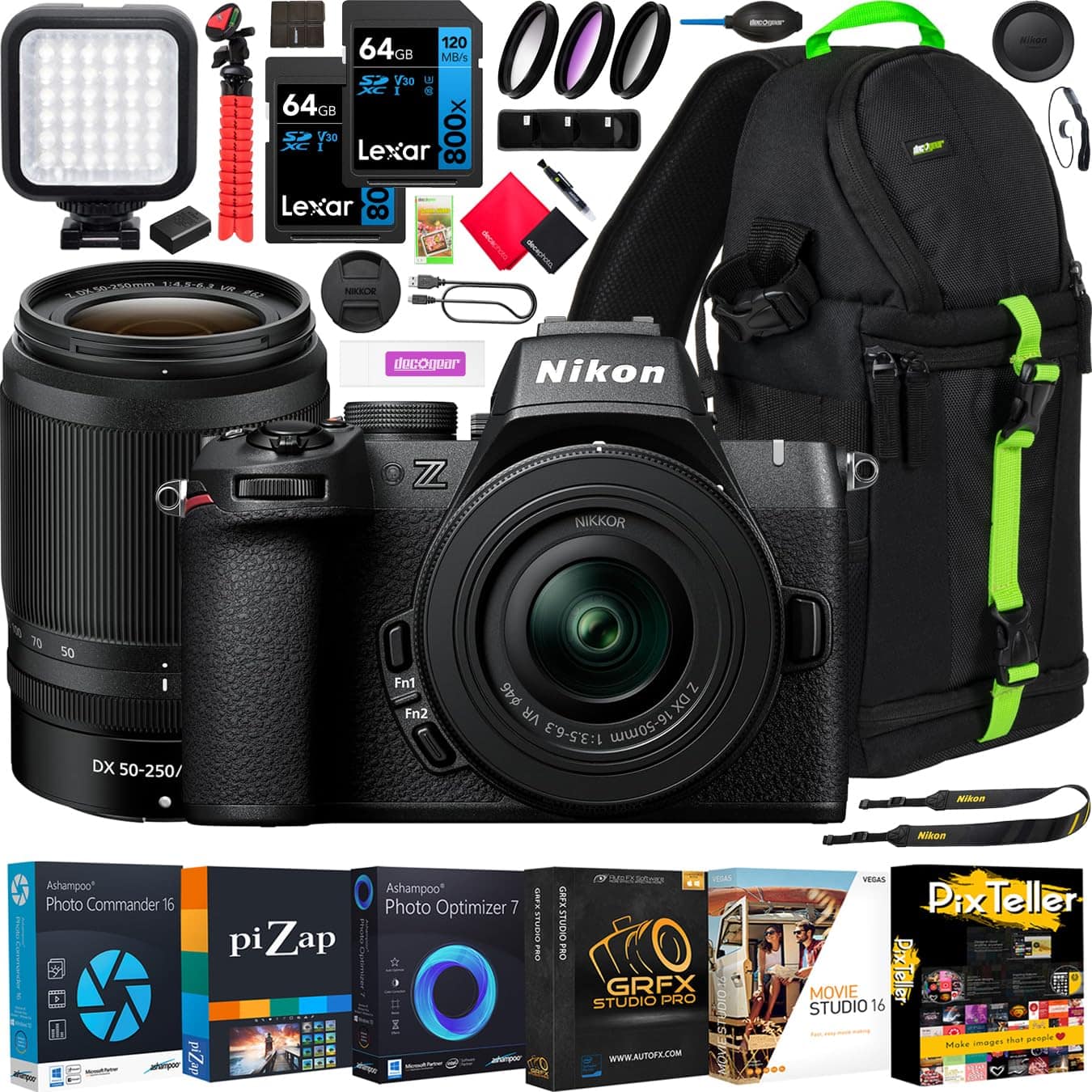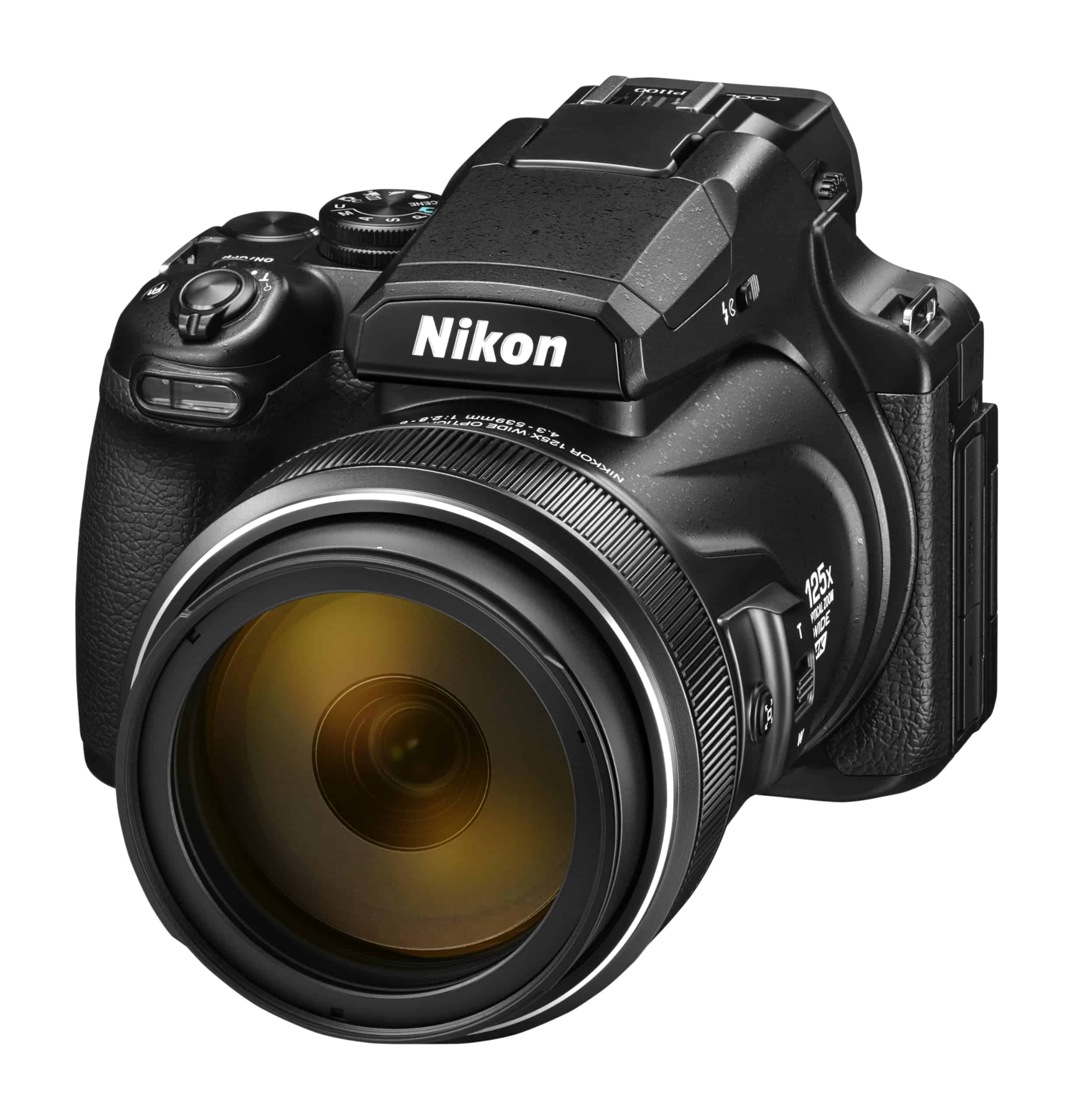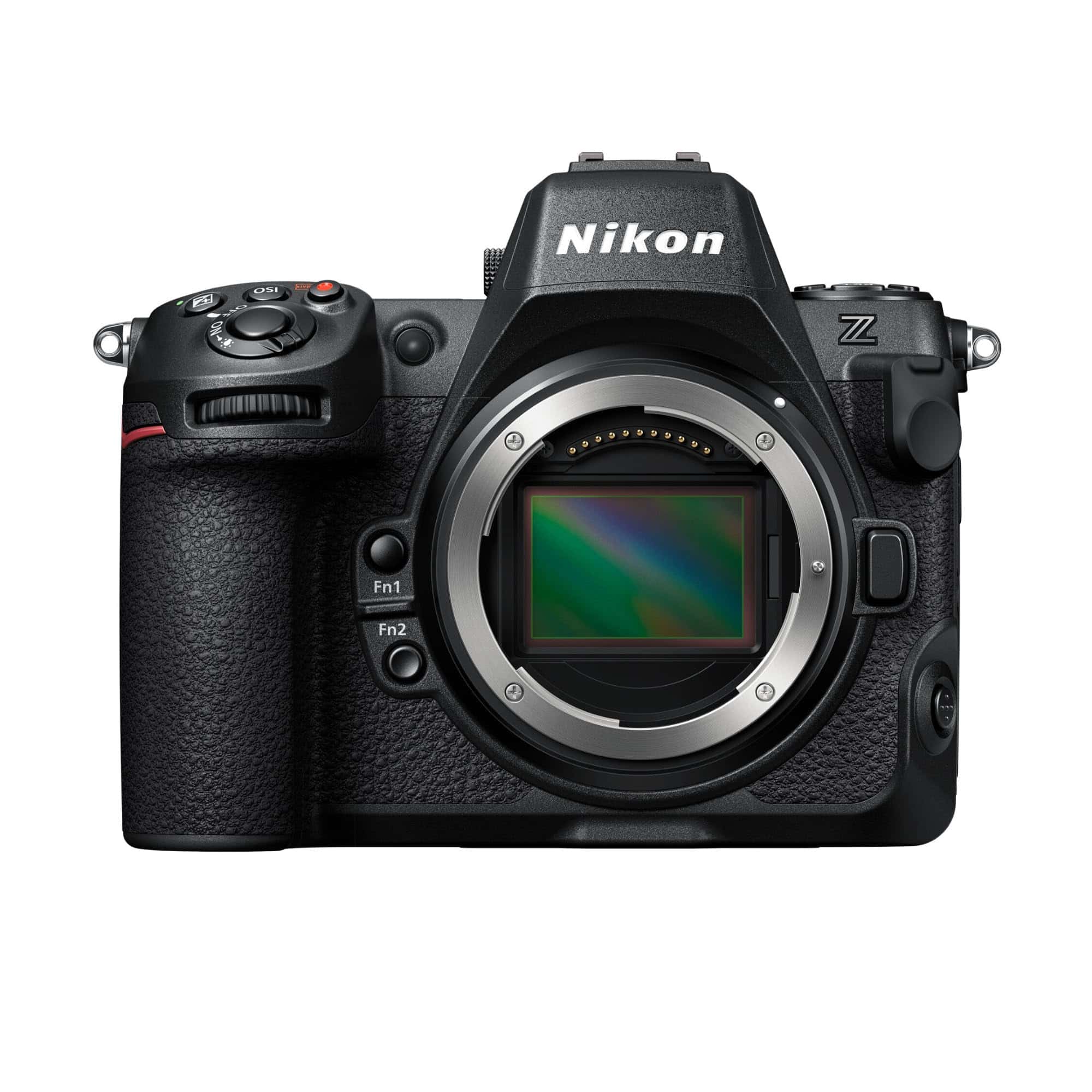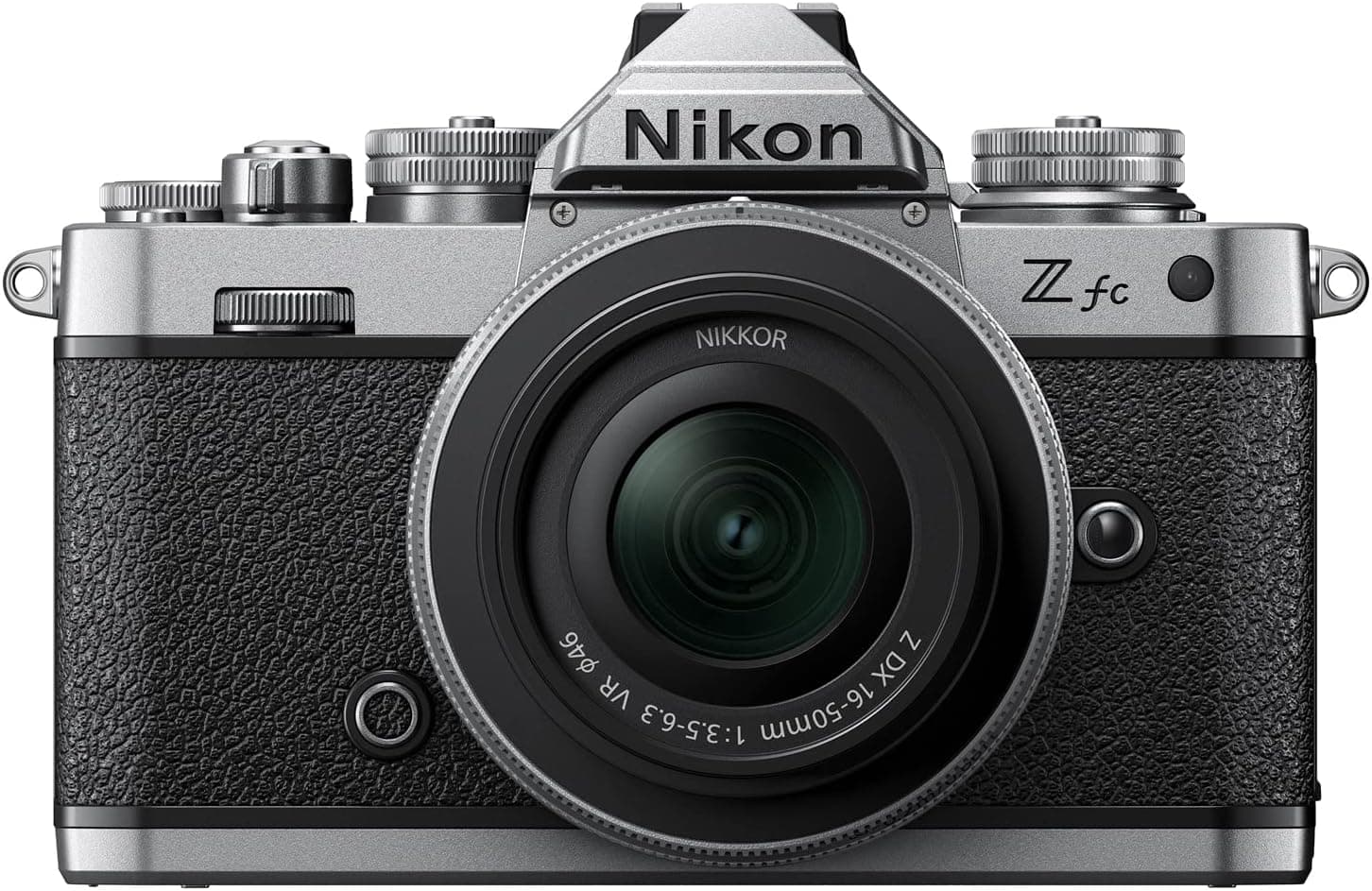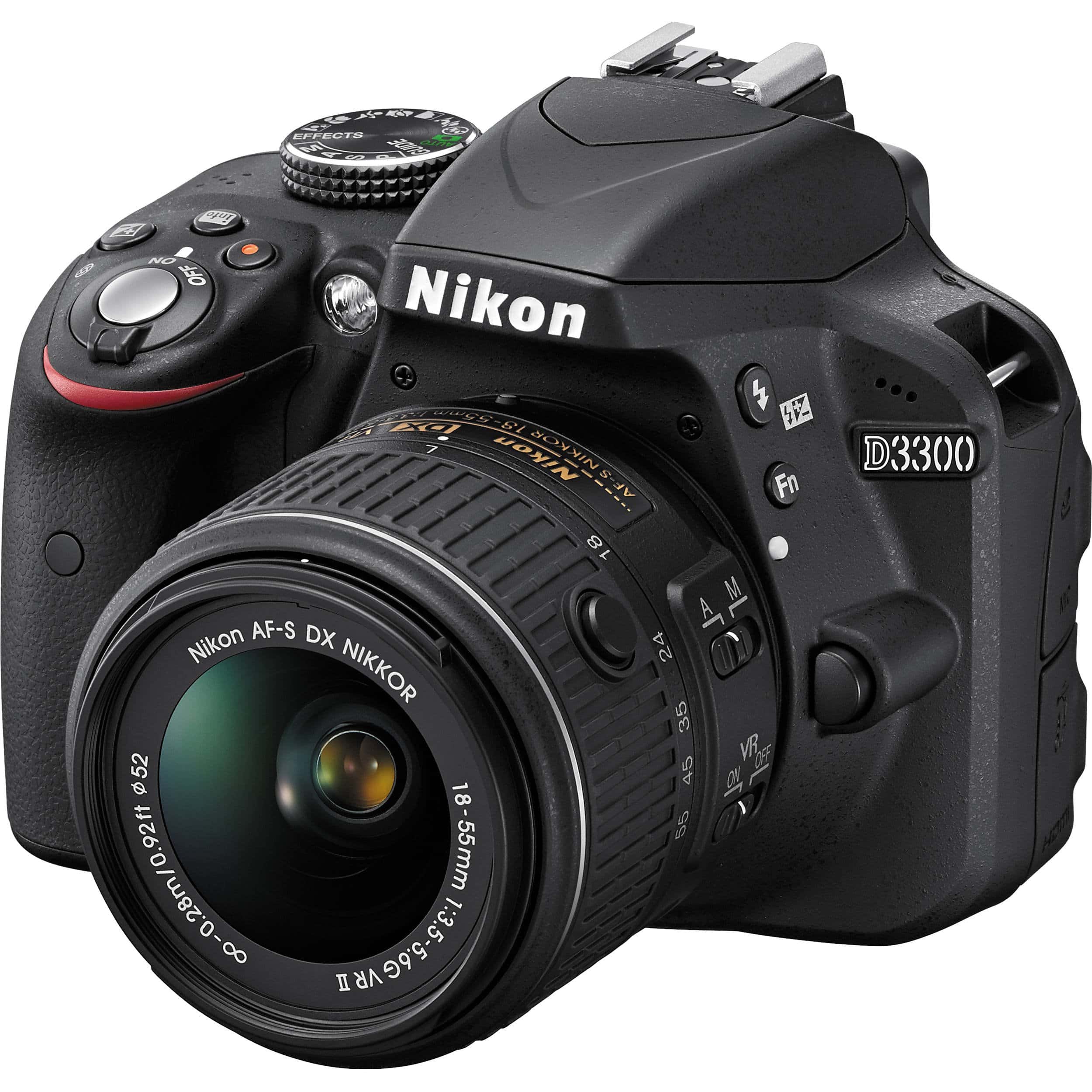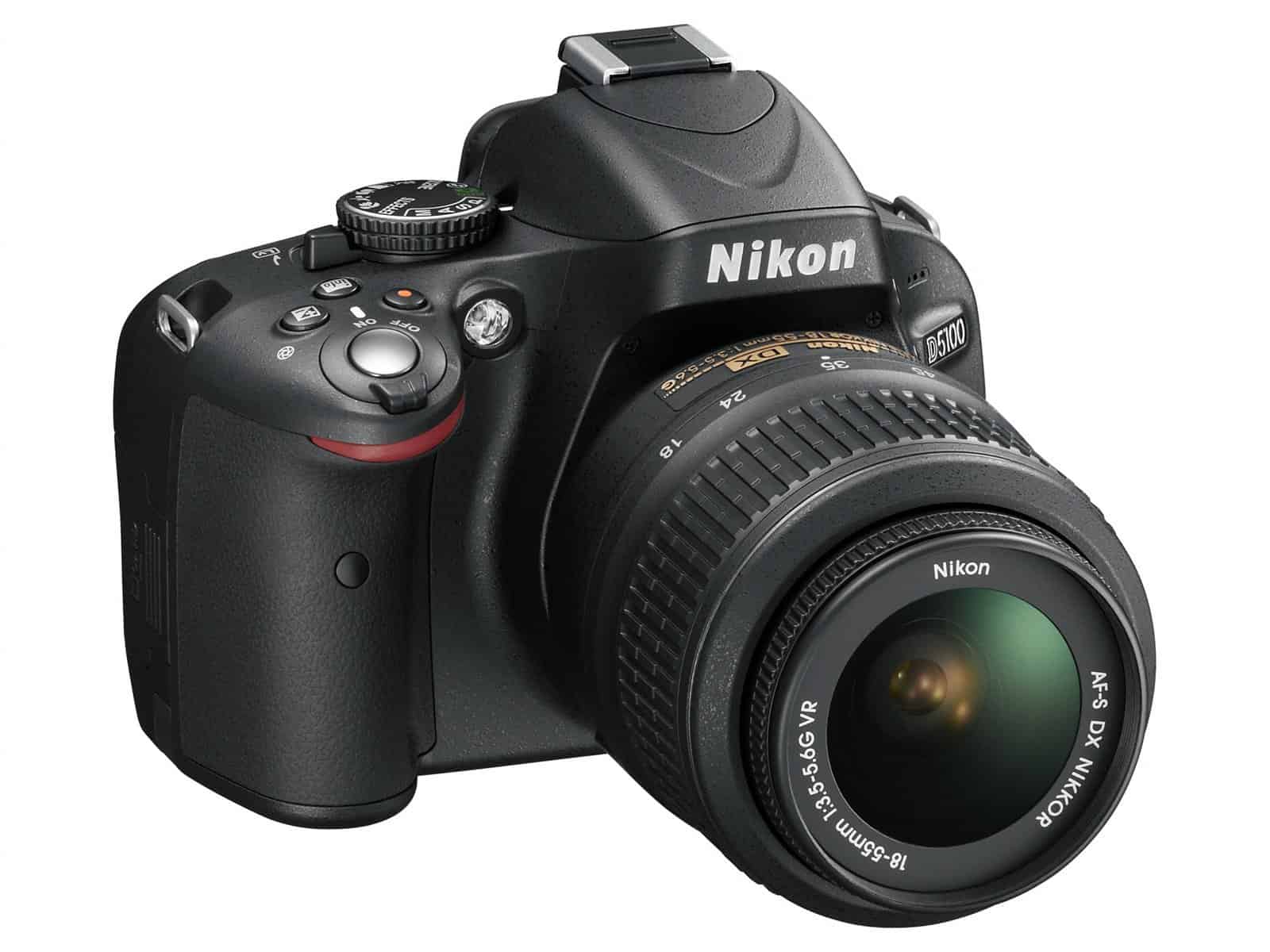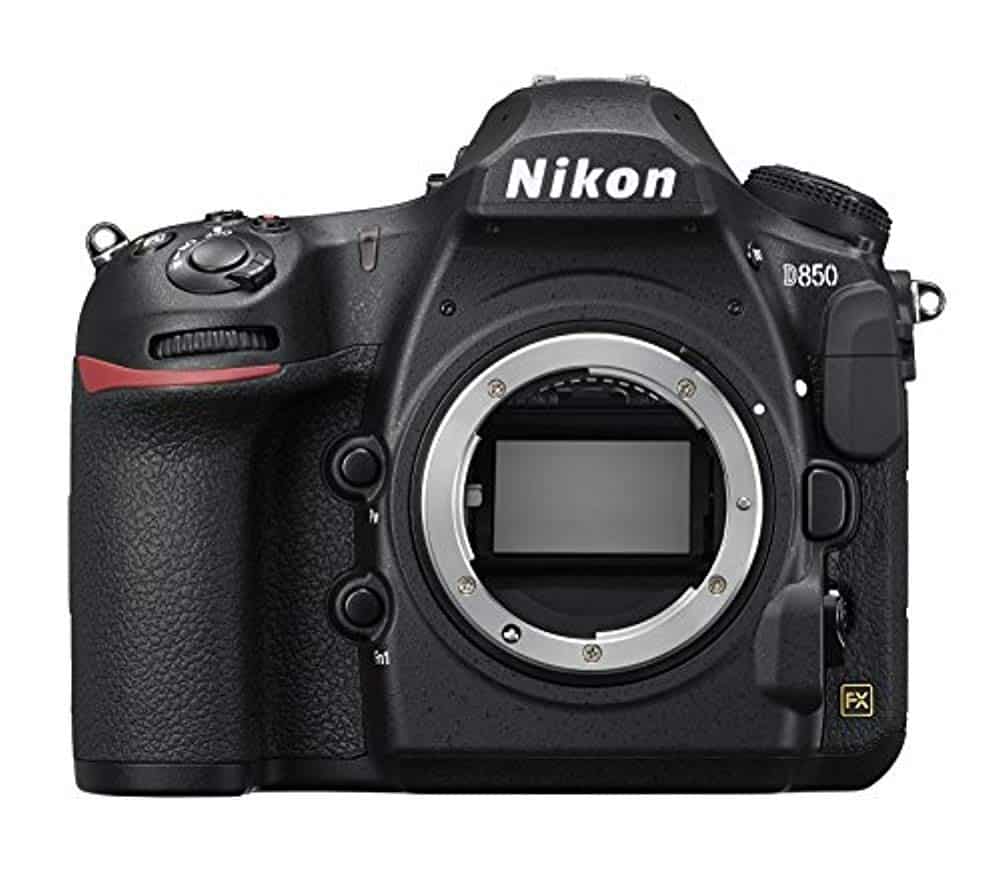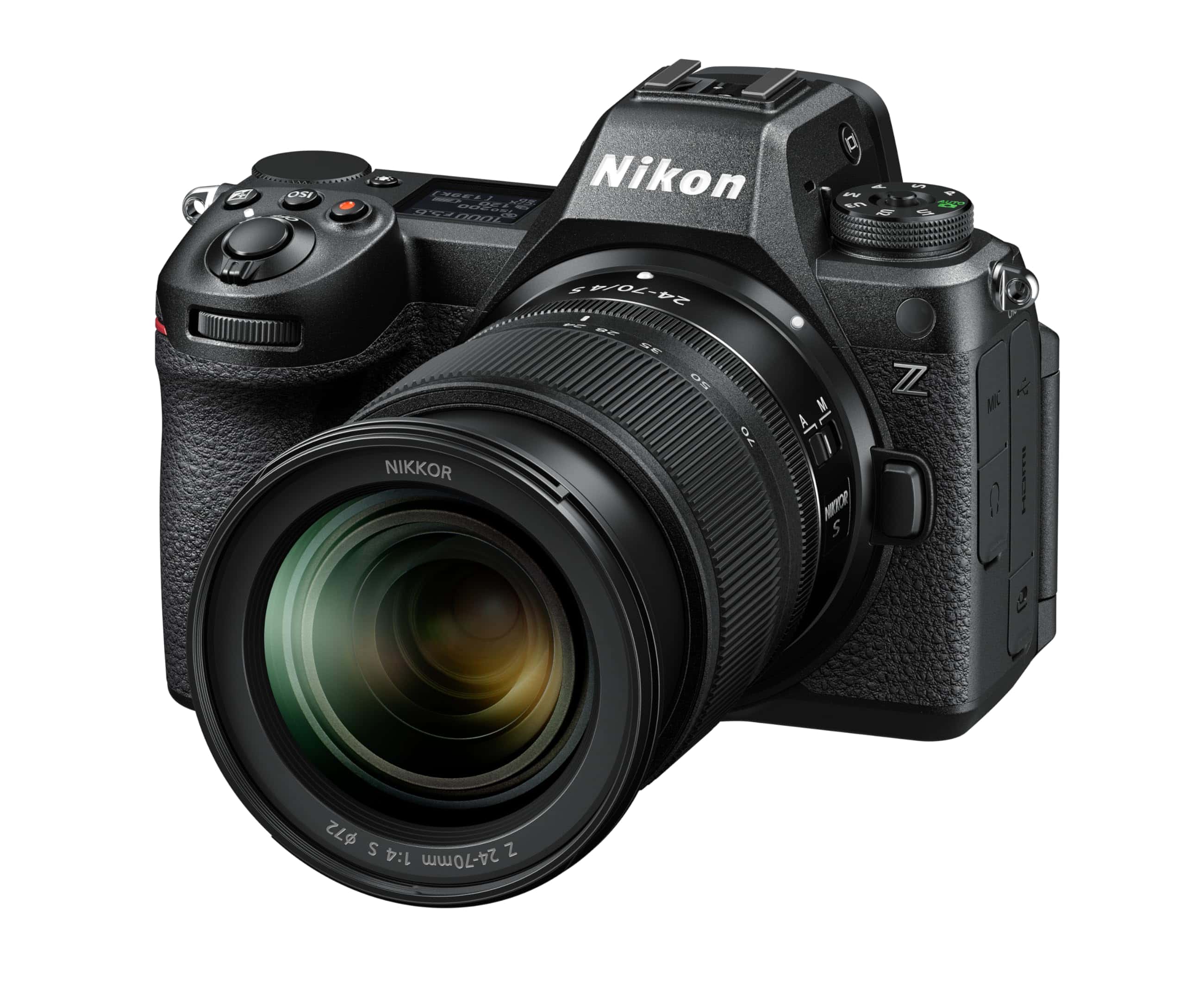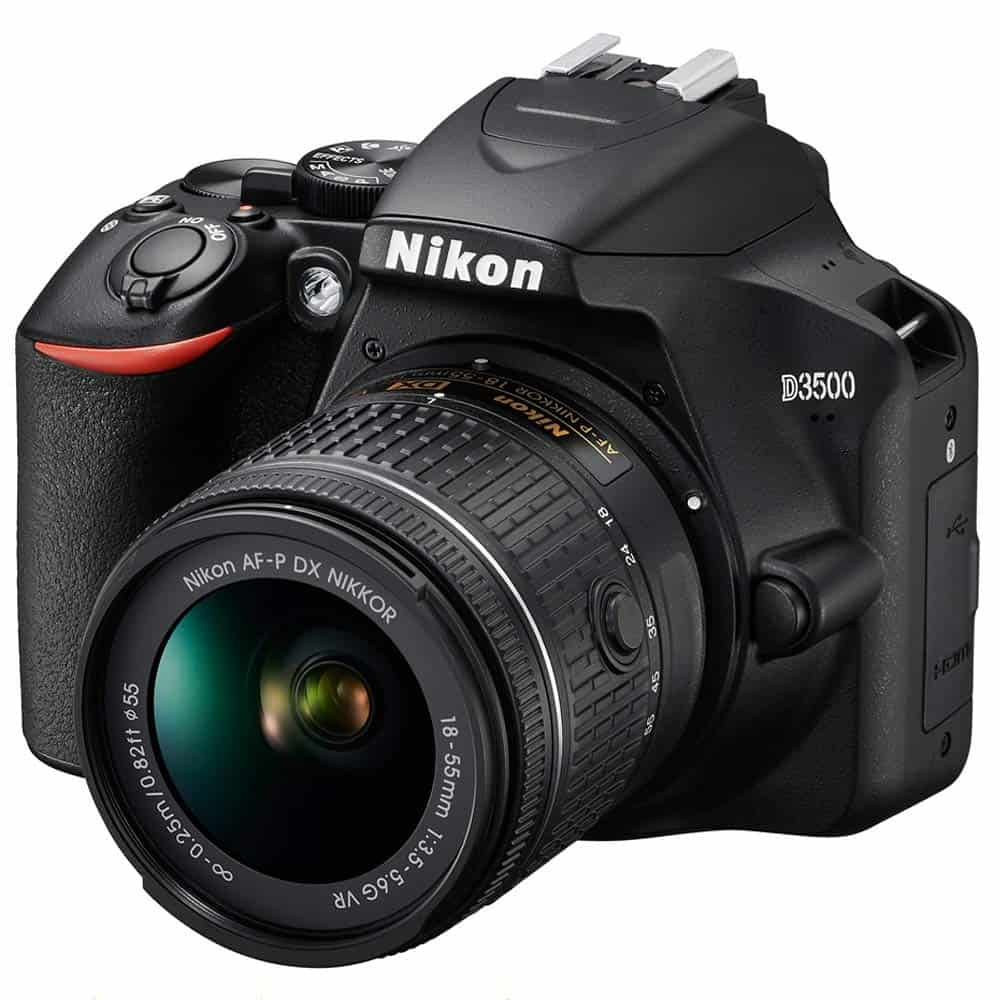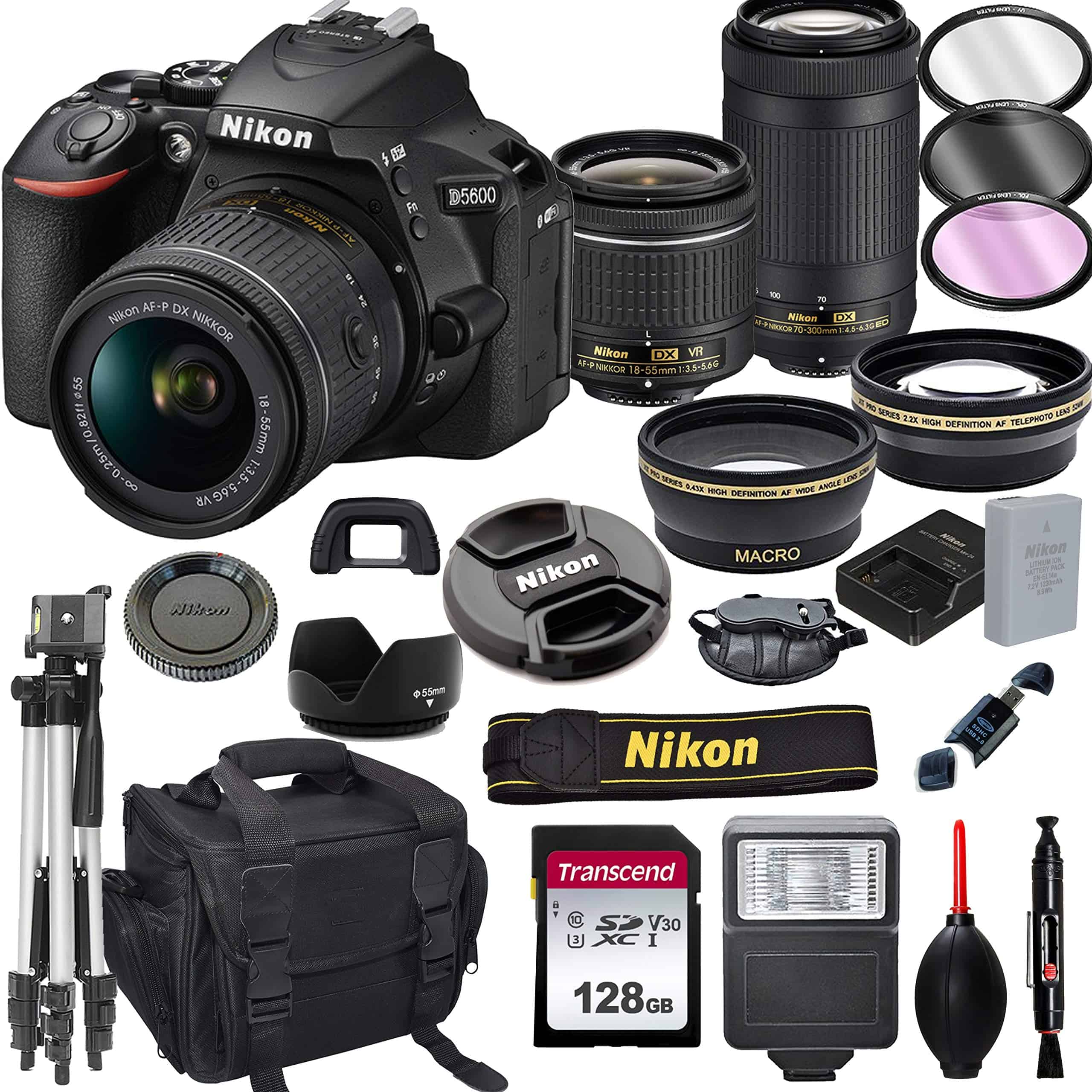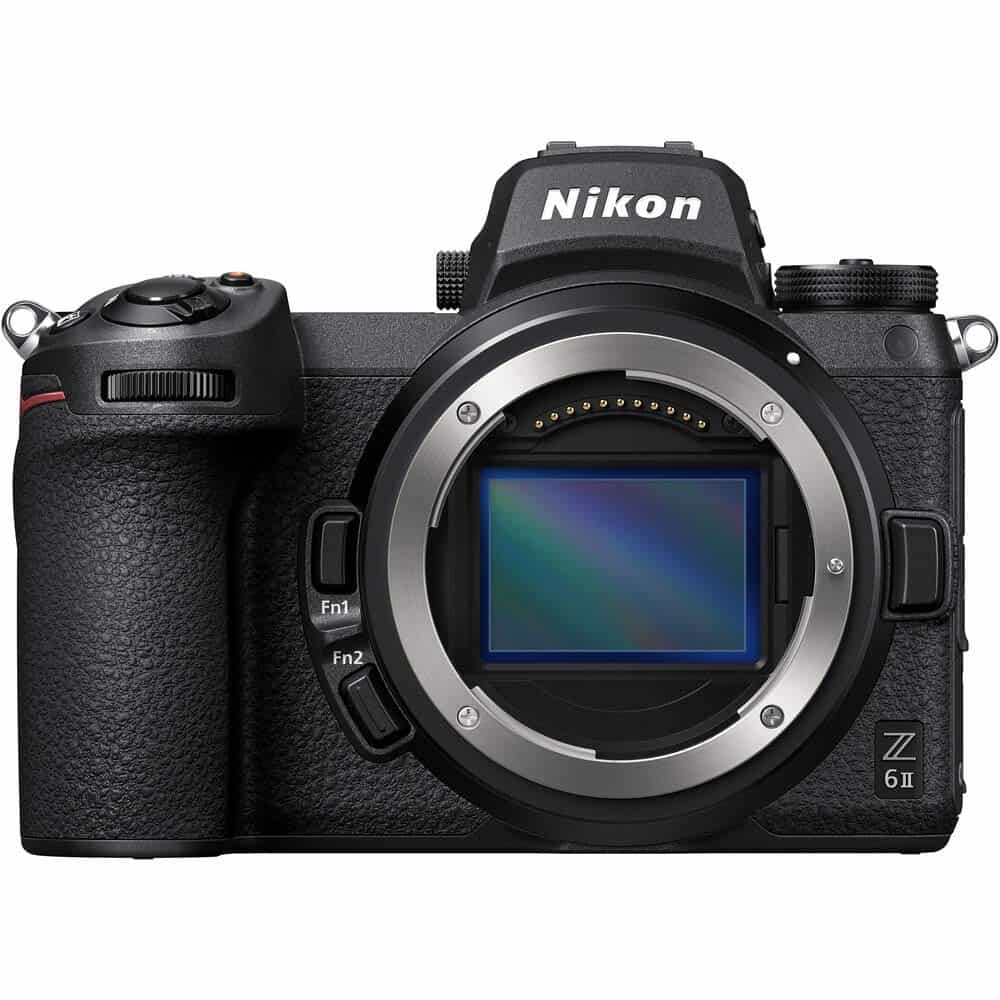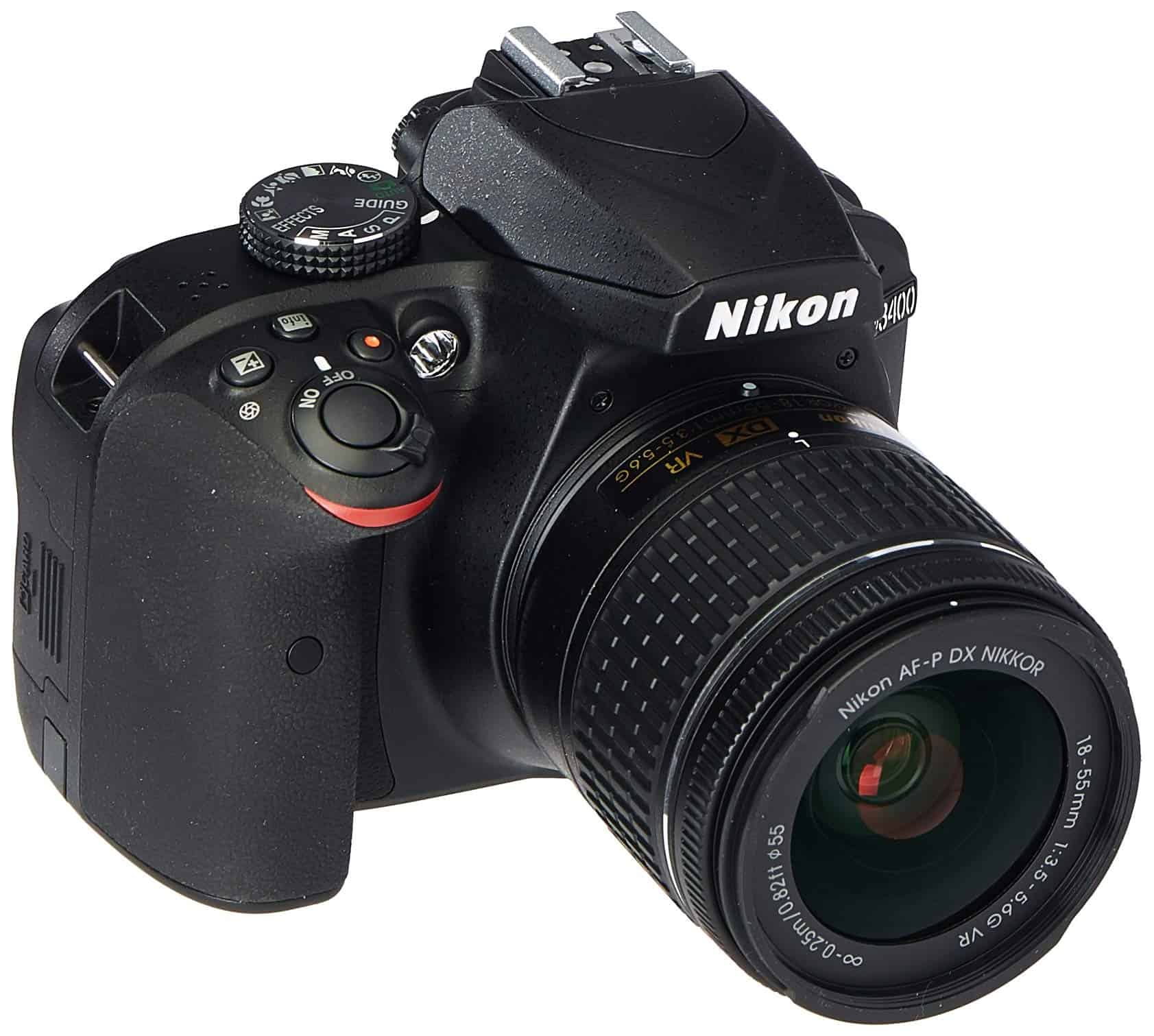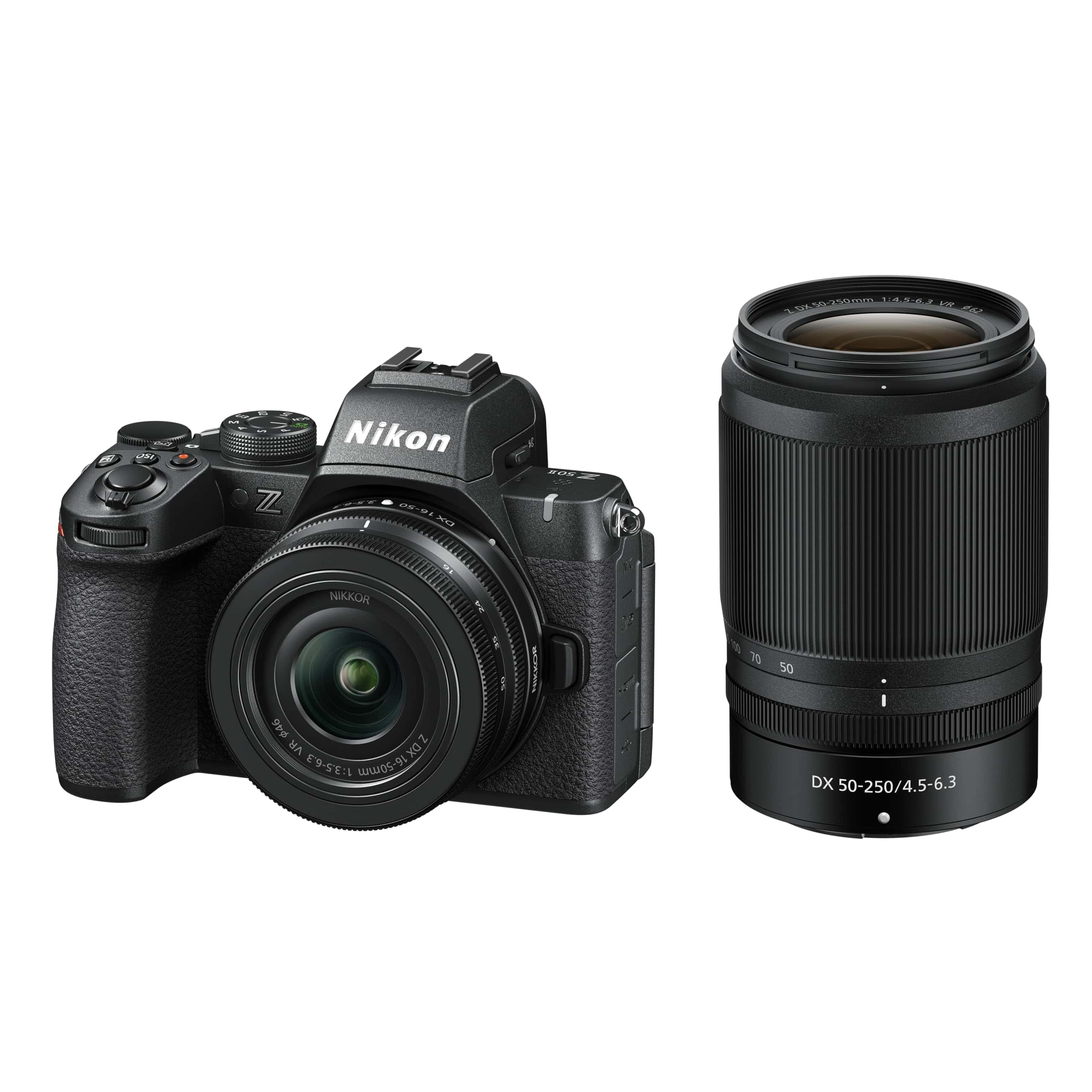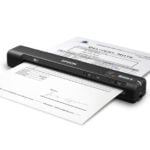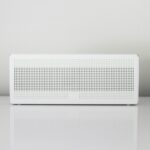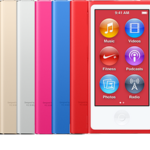Photography lovers know the value of a good camera. Nikon has been making cameras for over 100 years, and their quality stands out. These cameras offer great pictures for both new photographers and experts who want more control.
When buying a Nikon camera, pay attention to the sensor size, megapixels, and lens options. The sensor affects picture quality in different lighting. Megapixels matter for image detail, especially if you plan to print large photos. Nikon offers many lenses that work with their cameras, giving you room to grow your skills.
Your budget will also guide your choice. Nikon makes cameras at different price points from basic models to professional gear. We tested fifteen Nikon cameras over three months to find the best options for every kind of photographer.
Best Nikon Cameras
We’ve tested and reviewed the top Nikon cameras on the market to bring you this expert guide. Our list includes options for every budget and skill level, from beginner-friendly models to professional-grade equipment. Each camera was evaluated based on image quality, features, durability, and value for money.
Nikon D7500 DSLR Camera
The Nikon D7500 offers professional-quality images and versatile features that make it an excellent investment for photographers looking to step up their game.
Pros
- Outstanding image quality even in low light
- Fast autofocus with 51 focus points for sharp action shots
- 4K video capabilities with excellent sound recording
Cons
- Slightly heavier than newer mirrorless options
- Single memory card slot limits backup options
- Battery life could be better when shooting video
We took the D7500 out for a weekend shoot and were blown away by its performance. The 20.9MP sensor captures stunning details, and the ISO range handled dim lighting conditions without introducing much noise. The camera feels solid in hand with controls that fall naturally under your fingers after a short adjustment period.
The tilting touchscreen is a game-changer for awkward shooting angles. We found ourselves getting creative with low-angle nature shots and overhead crowd photos that would have been tough with a fixed screen. Touch functionality makes navigating menus and reviewing images quick and intuitive, especially when you need to change settings on the fly.
Action photographers will love the 8 fps continuous shooting capability. We captured a series of birds in flight, and the camera locked focus throughout the sequence. The 18-140mm kit lens offers great versatility for everyday shooting, though serious photographers might want to add specialized lenses to their kit. The 4K video quality impressed us, with rich colors and good detail that looked great even on large screens.
Nikon COOLPIX P950 Superzoom Camera
The COOLPIX P950 is a wildlife photographer’s dream with its incredible 83x zoom capability and 4K video that makes capturing distant subjects remarkably easy.
Pros
- Impressive 83x optical zoom reaches up to 2000mm equivalent
- Built-in image stabilization keeps distant shots sharp
- RAW format shooting and 4K video capabilities
Cons
- Somewhat bulky compared to pocket cameras
- Small sensor limits low-light performance
- Battery life could be better at around 290 shots per charge
We recently took the P950 on a wildlife photography trip and were blown away by its reach. Birds that appeared as tiny dots to our eyes filled the frame with stunning detail. The 16MP sensor may not sound impressive compared to today’s standards, but paired with Nikon’s EXPEED processor, it delivers crisp, clear images even at extreme zoom ranges.
The flip-out screen proved incredibly useful when shooting at awkward angles. We particularly enjoyed using the specialized Bird and Moon modes – they’re not just marketing gimmicks but genuinely helpful presets that optimize settings for these challenging subjects. The electronic viewfinder is bright and responsive, making it easy to frame shots even in bright sunlight.
Handling the camera feels natural despite its size. The built-in Dual Detect Optical VR (Vibration Reduction) system works wonders when shooting handheld at full zoom. We captured sharp images of distant wildlife without needing a tripod in good lighting conditions. The ability to shoot in RAW format gives plenty of editing flexibility, while the WiFi and Bluetooth connectivity made sharing our best shots quick and painless.
Nikon D7500 Bundle
The Nikon D7500 bundle offers exceptional image quality and versatility for both amateur and professional photographers seeking a complete camera system.
Pros:
- Impressive 20.9MP sensor with excellent low-light performance
- Complete kit with two versatile lenses and tons of accessories
- User-friendly touchscreen with intuitive controls
Cons:
- Heavier than mirrorless alternatives
- Learning curve for beginners
- Battery life could be better for extended shoots
We recently tested this Nikon D7500 bundle and were blown away by its capabilities. The camera feels solid in your hands with buttons placed just where you need them. Its 20.9MP sensor captured crisp, vibrant images even when we shot in challenging lighting conditions. The ISO range is truly impressive, allowing us to shoot in near darkness while keeping noise levels acceptable.
The included 18-55mm lens works great for everyday photography, while the 70-300mm lets you zoom in on distant subjects. We took both lenses to a local sports event and switched between them with ease. The autofocus system locked onto moving subjects quickly, and we captured action shots that looked sharp and clear.
The 4K video recording feature exceeded our expectations. Colors looked natural and the footage was stable thanks to the VR (Vibration Reduction) in the 18-55mm lens. The tilting touchscreen made recording from different angles simple and intuitive. The bundle’s included microphone significantly improved audio quality compared to the built-in mic.
This package includes everything a photographer needs to start shooting right away. The extra battery, memory cards, filters, and carrying case meant we didn’t have to buy additional accessories. For anyone looking to upgrade their photography gear or start with a comprehensive system, this Nikon D7500 bundle delivers outstanding performance and value.
Nikon Z 30 Camera Kit
The Nikon Z 30 is the perfect entry-level mirrorless camera for content creators who want professional-looking videos without the complexity of high-end equipment.
Pros
- Flip-out touchscreen makes selfie videos easy
- Impressive 4K video quality with good low-light performance
- Compact and lightweight design for handheld shooting
Cons
- No viewfinder for traditional photographers
- Limited battery life during video recording
- Single memory card slot restricts extended shooting
We recently tested the Nikon Z 30, and it’s clear why TechRadar named it a top vlogging camera. This compact mirrorless camera fits comfortably in hand while providing video quality that smartphones simply can’t match. The flip-out screen is a game-changer for self-recording, showing your framing in real-time.
The included 16-50mm lens offers plenty of versatility for different shooting styles. We found its wide-angle capability perfect for vlogging in tight spaces, while the optical stabilization kept our handheld footage remarkably steady. The autofocus system tracks faces and eyes with impressive accuracy, even following pets during quick movements.
Connection options really shine with this camera. We plugged it directly into a laptop for instant webcam functionality, and the smartphone app let us control settings remotely. Low-light performance exceeded our expectations for a camera in this price range. The Z 30 truly grows with your skills, accepting Nikon’s entire Z-mount lens lineup when you’re ready to expand your creative options.
Nikon Z 5 Mirrorless Camera
The Nikon Z 5 offers exceptional full-frame image quality in a compact body that’s perfect for both beginners and experienced photographers looking to upgrade.
Pros
- Outstanding low-light performance with clean images even at high ISO
- Effective 5-axis stabilization system helps capture sharp handheld shots
- Dual SD card slots provide peace of mind with backup storage options
Cons
- 4.5 fps burst rate lags behind competitors for action photography
- Video has a 1.7x crop in 4K mode, limiting wide-angle options
- Battery life could be better for all-day shooting sessions
We’ve spent considerable time testing the Nikon Z 5, and it continues to impress us. This compact full-frame camera feels solid in hand with controls that fall naturally under your fingers. The weather sealing gives us confidence shooting in challenging conditions without worry.
Image quality is where this camera truly shines. The 24.3MP sensor captures photos with beautiful colors, excellent dynamic range, and impressive detail. When shooting in low light, we found images remained clean and usable even at ISO 6400. The in-body stabilization system works remarkably well, letting us shoot handheld at slower shutter speeds than we’d normally attempt.
The autofocus system performs admirably in most situations. We particularly like the eye-detection feature that works not just for people but also for pets. This makes capturing sharp portraits much easier. The tilting touchscreen is responsive and bright enough to use outdoors, though we often found ourselves using the crisp electronic viewfinder instead.
For photographers moving from DSLRs to mirrorless, the Z 5 offers a gentle learning curve while delivering professional-quality results. The ability to use F-mount lenses with an adapter means you can bring your existing glass along for the journey. We think this camera represents excellent value for anyone wanting to experience full-frame without breaking the bank.
Nikon Z 30 Camera
The Nikon Z 30 is a perfect entry-level mirrorless camera for content creators who want professional-quality video without the learning curve.
Pros
- Compact, lightweight design ideal for handheld vlogging
- Flip-out touchscreen makes framing yourself easy
- Excellent autofocus with eye-tracking for people and pets
Cons
- No viewfinder for photographers who prefer traditional shooting
- Battery life could be better for long recording sessions
- Body-only means additional lens purchase required
We recently tested the Nikon Z 30 and found it strikes a nice balance between simplicity and power. Its compact body feels solid in hand yet weighs little enough to carry all day. For creators looking to move beyond smartphone videos, this camera delivers that professional, cinematic look that helps content stand out.
The flip-out screen is a game-changer for solo creators. We could easily frame shots while filming ourselves, and the touchscreen controls feel intuitive. When paired with the smartphone app, we controlled settings remotely without needing an assistant. The red recording indicator light is a small but helpful feature that confirmed we were actually recording.
Video quality impressed us the most. The 4K resolution looks crisp, and the autofocus system kept up with fast movements. We tested it during an unboxing video, and it smoothly tracked both our face and the product details. Low-light performance exceeded our expectations for a camera in this price range. The built-in stereo mic captured decent audio, though serious creators will want to add an external microphone eventually. Overall, the Z 30 offers a smooth path into the Nikon ecosystem with room to grow as your skills develop.
Nikon Z 5 Mirrorless Camera with 24-200mm Lens
The Nikon Z 5 with 24-200mm lens is a worthwhile investment for photographers seeking a versatile full-frame camera that delivers professional-quality images without overwhelming complexity.
Pros
- Excellent image quality with sharp details and vibrant colors
- Versatile 24-200mm zoom lens covers wide to telephoto range
- Effective 5-axis stabilization for steady shots
Cons
- Limited continuous shooting speed (4.5 fps)
- Video recording capped at 30 minutes
- Heavier than some competing mirrorless options
We recently tested the Nikon Z 5 and were impressed by how this compact full-frame camera performs in various shooting situations. The 24.3MP sensor captures stunning details with rich colors that pop, especially in challenging lighting conditions. Its low-light performance exceeded our expectations, producing clean images even at higher ISO settings.
The included 24-200mm lens offers remarkable versatility. During our test shoots, we captured everything from wide landscapes to close-up wildlife photos without changing lenses. This all-in-one zoom solution is perfect for travel photography or everyday shooting when you don’t want to carry multiple lenses.
Eye-detection autofocus works brilliantly for portraits. The camera quickly locks onto human eyes and even recognizes pets, making it simple to get perfectly focused shots of moving subjects. We found the focus tracking reliable and accurate in most situations.
The 5-axis stabilization system makes a noticeable difference when shooting handheld. We captured sharp images at slower shutter speeds without a tripod. This feature also helps deliver smoother video footage, though serious videographers might want more than the 4K/30p capability.
Handling the Z 5 feels natural with its comfortable grip and logical button layout. The tilting touchscreen and electronic viewfinder both provide clear views of your subject. Built-in WiFi and Bluetooth make sharing images to your phone quick and simple through Nikon’s SnapBridge app.
For photographers stepping up to full-frame or looking to switch to mirrorless, this camera hits a sweet spot of quality, features, and value. While not the fastest camera for action photography, its image quality and versatility make it an excellent choice for most shooting scenarios.
Nikon Z f Camera Kit
The Nikon Z f with its 40mm f/2 special edition lens delivers exceptional image quality with vintage styling that makes it worth every penny for both photo and video creators.
Pros
- Beautiful retro design with modern performance
- Excellent low-light capabilities with clean high ISO
- Impressive image stabilization system
Cons
- Learning curve with hybrid dial system
- Battery life could be better
- Somewhat heavy compared to competitors
We recently tested the Nikon Z f mirrorless camera and were blown away by its performance. The 24.5MP full-frame sensor captures stunning details in almost any lighting condition. Its vintage-inspired body houses cutting-edge technology that serious photographers will appreciate.
The included 40mm f/2 lens is a perfect match for this camera. We found it sharp across the frame with lovely background blur. This compact prime is ideal for street photography and everyday shooting. The lens focuses quickly and quietly, making it great for video work too.
Speaking of video, the Z f records beautiful 4K footage with plenty of options for professionals. We recorded several test clips and were impressed by the color accuracy and detail. The vari-angle touchscreen makes shooting from creative angles easy, and the in-body stabilization kept our handheld footage smooth.
The autofocus system deserves special mention. With 273 focus points and subject recognition, it tracked moving subjects reliably in our tests. The 3D tracking feature worked particularly well for capturing fast action. We also appreciated the pixel-shift feature, which allows for creating ultra-high-resolution 96MP images when needed.
Nikon Z 5 Full-Frame Camera Kit
The Nikon Z 5 with 24-50mm lens kit offers excellent image quality and versatility in a compact full-frame camera that’s perfect for both beginners and experienced photographers looking to go mirrorless.
Pros
- Impressive full-frame image quality in a compact, lightweight body
- Effective 5-axis in-body stabilization for steady shots
- User-friendly interface with great smartphone connectivity
Cons
- Limited 4.5 fps continuous shooting speed
- Kit lens has modest f/4-6.3 aperture range
- Video features aren’t as advanced as higher-end models
We recently tested the Nikon Z 5, and it’s a standout entry-level full-frame mirrorless camera. The 24.3MP sensor captures stunning details and rich colors, even when shooting in low light. The compact size makes it perfect for traveling or all-day shooting without the bulk of traditional DSLRs.
The 24-50mm kit lens surprised us with its versatility. While not the fastest lens in Nikon’s lineup, it’s remarkably compact and covers useful focal lengths for everyday photography. We found it ideal for street scenes, indoor shots, and casual portraits. The lens retracts when not in use, making the whole package even more portable.
Handling the Z 5 feels natural, with well-placed controls and a responsive tilting touchscreen. The electronic viewfinder is bright and clear, making composition a joy. We especially appreciated the eye-detection autofocus, which locked onto subjects with impressive accuracy, even following moving pets or people reliably.
Battery life is solid for a mirrorless camera, letting us shoot for extended periods. The dual SD card slots provide peace of mind for important shoots. For those getting started with full-frame photography or Nikon users looking to move to mirrorless, this kit offers excellent value while delivering the image quality Nikon is known for.
Nikon Z 30 Creator Camera Kit
The Nikon Z 30 is the perfect starter camera for content creators who want professional-quality video without the complexity of high-end equipment.
Pros
- Compact, lightweight body perfect for handheld vlogging
- Flip-out touchscreen makes self-recording simple
- Excellent image stabilization keeps footage steady
Cons
- No built-in viewfinder
- Battery life could be better for longer recording sessions
- Learning curve for camera newcomers
We recently got our hands on the Nikon Z 30 two-lens kit, and it’s an impressive package for anyone looking to step up their content creation game. This camera sits perfectly between smartphone simplicity and professional equipment. The body feels solid yet light enough to hold for extended periods while filming.
The flip-out screen is a standout feature that makes framing yourself incredibly easy. We tested it while walking and talking, and the touchscreen controls are responsive and intuitive. Both included lenses offer different creative options – the 16-50mm is perfect for typical vlogging scenarios while the 50-250mm lets you capture amazing detail from a distance.
Video quality is where this camera truly shines. The 4K footage looks crisp with beautiful background blur that smartphones simply can’t match. We were especially impressed with how well it handles low light situations compared to other cameras in this price range. The eye-tracking autofocus worked flawlessly with both people and pets, keeping everything sharp even when moving around.
Nikon Z50II Mirrorless Camera
The Nikon Z50II delivers exceptional image quality and versatility in a compact body, making it an ideal upgrade for anyone looking to move beyond smartphone photography.
Pros
- Outstanding image quality with 20.9MP sensor
- Smart subject recognition autofocus that tracks people, pets, and vehicles
- Compact, lightweight design that’s easy to carry all day
Cons
- Menu system takes time to learn
- Battery life could be better for all-day shooting
- Limited native lens selection compared to DSLR options
We recently tested the Nikon Z50II mirrorless camera and were impressed by its performance. The camera feels solid in hand despite its lightweight design. Its grip provides comfortable handling even during long shooting sessions. The touchscreen is responsive and tilts, which helps when shooting from creative angles.
Taking photos in low light showed how capable this camera really is. The larger APS-C sensor captures details that smartphone cameras simply can’t match. We noticed rich colors and sharp images even when shooting indoors or at dusk. The built-in flash is handy for fill light without needing extra equipment.
The Z50II comes with two versatile lenses that cover most shooting situations. The 16-50mm works great for everyday shots and wide angles, while the 50-250mm lets you zoom in on distant subjects. Both lenses include vibration reduction, which helped us get crisp shots even when shooting handheld. Videos look smooth and professional with the 4K/60p recording capability and built-in electronic stabilization.
Connecting to our phone was simple using Bluetooth and WiFi. We transferred photos quickly and could control the camera remotely, which is perfect for group shots or wildlife photography. The bundle includes useful extras like memory cards, filters, and a camera bag that saved us from making separate purchases.
Nikon COOLPIX P1100 Superzoom
The COOLPIX P1100 is worth buying for anyone who needs extreme zoom capability in a single camera that can capture everything from distant wildlife to macro close-ups.
Pros
- Incredible 125x optical zoom reaches subjects other cameras simply can’t
- Excellent image stabilization keeps shots steady even at full zoom
- Versatile shooting modes including 4K video and RAW format
Cons
- Bulky size makes it less portable than smaller point-and-shoots
- Can be challenging to track fast-moving subjects at maximum zoom
- Battery life drains quickly when using the zoom frequently
We tested the Nikon COOLPIX P1100 over a weekend of bird watching and landscape photography. The 125x zoom is simply amazing – we could clearly see the craters on the moon and capture birds that were barely visible to our naked eyes. This camera brings faraway subjects surprisingly close with its 24-3000mm equivalent lens range.
The dual detection image stabilization really works. Our handheld shots at full zoom were much sharper than expected, even in moderate wind conditions. We also liked the dedicated bird-watching mode on the dial, which quickly optimized settings when we spotted rare birds in the distance.
For close-up work, the macro mode impressed us too. We got within 1cm of tiny flowers and captured incredible detail. The customizable control ring made manual focus adjustments easy when shooting these detailed subjects. While it’s not pocket-sized at just over 3 pounds, the rotating LCD screen and comfortable grip made the P1100 pleasant to use for extended shooting sessions.
Nikon Z 8 Camera
The Nikon Z 8 is worth every penny for serious photographers who need a powerful hybrid camera that excels at both stills and video.
Pros
- Incredible 45.7MP image quality with amazing detail
- Lightning-fast autofocus with smart subject detection
- Professional-grade 8K video capabilities
Cons
- Steep learning curve for all features
- Battery life could be better for long shoots
- Premium price point
We recently tested the Nikon Z 8, and it’s easily one of the most impressive cameras we’ve handled. The build quality feels substantial yet the body remains surprisingly lightweight for a full-frame camera. Holding it in our hands, the ergonomics felt just right with intuitive button placement that made quick adjustments a breeze even during fast-paced shooting.
The 45.7MP stacked CMOS sensor delivers stunning images with remarkable detail. During our testing, the dynamic range impressed us repeatedly, capturing both bright highlights and deep shadows in challenging lighting situations. The autofocus system is nothing short of remarkable – it tracked moving subjects with precision we’ve rarely seen before, even in low light conditions.
For video shooters, this camera is a game-changer. We recorded in 8K and were blown away by the clarity and color accuracy. The internal 12-bit RAW recording gives incredible flexibility in post-production. The tilting touchscreen makes shooting from different angles comfortable, and the electronic viewfinder is bright and responsive with no blackout during continuous shooting. Overall, the Z 8 represents Nikon at its best – a truly professional tool that handles almost any photography or videography challenge you throw at it.
Nikon Z fc Mirrorless Camera
The Nikon Z fc is worth every penny for photographers who want classic styling with modern technology and excellent image quality in a compact body.
Pros
- Beautiful retro design with intuitive analog controls
- Excellent 20.9MP image quality with 4K video capability
- Flip-out screen perfect for vlogging and selfies
Cons
- Mostly plastic construction despite vintage metal appearance
- Battery life could be better for extended shooting
- Limited native DX lens selection currently available
We recently tested the Nikon Z fc and were amazed by how this camera blends old-school charm with cutting-edge features. The tactile dials for shutter speed, ISO, and exposure compensation gave us a hands-on shooting experience that digital cameras often lack. This connection to the photography process made shooting more enjoyable and deliberate.
The image quality from the 20.9MP sensor surprised us, with sharp details and excellent color reproduction even in low light. When we shot some evening street scenes, the camera handled high ISO well without too much noise. The 4K video also impressed us with its clarity and the flip-out screen made framing vlog-style shots super easy.
Daily use revealed some thoughtful touches that make the Z fc stand out. We found the SnapBridge app connection reliable for quickly sharing photos to our phones. The camera feels light in hand at just 1.63 pounds with the kit lens attached. Though we wish the body had more metal parts like its film ancestors, the controls have a satisfying click that photography enthusiasts will appreciate. For beginners, the helpful guide mode and auto settings ensure you’ll get great shots while learning the ropes.
Nikon D3300 DSLR Camera
The Nikon D3300 delivers impressive image quality and user-friendly features at a price point that makes it perfect for beginners looking to step up their photography game.
Pros
- Sharp 24.2 MP sensor captures amazing detail
- Easy to use with helpful Guide Mode
- Lightweight design makes it comfortable for all-day shooting
Cons
- Limited autofocus points compared to newer models
- No built-in WiFi (requires adapter)
- Battery life could be better for extended shoots
We recently tested the Nikon D3300 and were impressed by how much camera you get for the money. This entry-level DSLR feels solid in the hands while remaining light enough to carry around all day. The grip is comfortable, and the button layout is intuitive even for those new to DSLRs.
The 24.2 MP sensor produces stunningly clear images with vibrant colors that really pop. We found the kit lens (18-55mm VR II) to be surprisingly good for everyday shooting. It handles landscapes and portraits equally well, though in low light you’ll notice some limitations. The VR (Vibration Reduction) feature helped us get sharp images even when shooting handheld at slower shutter speeds.
Taking photos with the D3300 is a joy. The 5 frames-per-second continuous shooting came in handy when capturing action shots at a local soccer game. We particularly liked the Easy Panorama Mode, which stitched together wide landscape shots with minimal effort. For beginners, the Guide Mode is extremely helpful – it walks you through camera settings based on what you’re trying to shoot. Even after using the camera for weeks, we still appreciate how simple Nikon made the learning process.
The 1080p video quality exceeded our expectations, producing smooth footage with good sound from the built-in mic. While it lacks some features of more expensive cameras, the D3300 hits the sweet spot for photography enthusiasts who want to move beyond smartphone pictures without breaking the bank.
Nikon D5100 DSLR
The Nikon D5100 offers excellent image quality and versatility for beginners and hobbyists at an affordable price point through Amazon’s Renewed program.
Pros
- Great image quality with 16.2MP sensor
- User-friendly controls for beginners
- Includes versatile 18-55mm VR lens
Cons
- Older model with dated features
- Battery life could be better
- Renewed products may show minor wear
We recently tested this renewed Nikon D5100, and we’re impressed by how well it holds up despite being an older model. The camera feels solid in hand without being too heavy. Its 16.2MP sensor captures sharp, detailed images that look great even in challenging lighting situations.
The 18-55mm VR lens that comes with the camera works nicely for most everyday shooting scenarios. We noticed the vibration reduction really helps keep shots steady when shooting handheld. For beginners stepping up from smartphone photography, this camera offers a perfect balance of manual controls and helpful automatic modes.
Using the camera’s 3-inch flip-out screen made taking photos from creative angles much easier than we expected. The menu system is straightforward, making it simple to adjust settings. While not the newest model on the market, this renewed Nikon represents excellent value for anyone wanting to explore photography without spending a fortune. Amazon’s 90-day warranty provides some peace of mind when buying refurbished gear.
Nikon D850 DSLR
The Nikon D850 combines exceptional resolution with impressive speed, making it an outstanding choice for professional photographers who need both quality and performance.
Pros
- Incredible 45.7 megapixel resolution with excellent dynamic range
- Fast autofocus system with 153 focus points
- Versatile video capabilities including 4K recording
Cons
- Substantial weight at 2 pounds
- Steep learning curve for beginners
- Higher price point than entry-level cameras
We recently tested the Nikon D850, and it’s easy to see why it remains a favorite among serious photographers. The image quality is simply stunning. Photos come out crisp and detailed with rich colors that pop. Even when shooting in low light, the camera performs well with minimal noise at higher ISO settings.
The autofocus system grabbed our attention immediately. It locks onto subjects quickly and tracks moving objects with remarkable accuracy. During a recent wildlife shoot, we captured birds in flight with nearly every shot in perfect focus. The 9 fps continuous shooting speed means you won’t miss critical moments.
Battery life exceeded our expectations. We shot all day without needing to change batteries, which is impressive for such a powerful camera. The tilting touchscreen is intuitive to use and makes shooting at odd angles much easier. For video creators, the 4K capabilities and slow-motion options add tremendous value. While it’s not a lightweight option, the solid build quality justifies the heft, giving us confidence it will withstand years of professional use.
Nikon Z6 III Kit
The Nikon Z6 III with 24-70mm f/4 lens delivers professional-grade image quality and video capabilities in a versatile package that’s worth every penny.
Pros
- Lightning-fast autofocus even in very dim lighting
- Exceptional electronic viewfinder with bright, detailed display
- Impressive 6K/60p video recording with RAW capability
Cons
- Battery life could be better for all-day shooting
- Learning curve for all the customization options
- Somewhat heavy compared to other mirrorless options
We recently got our hands on the Nikon Z6 III kit with the 24-70mm f/4 lens, and it’s a significant step up from previous Nikon mirrorless cameras. The partially-stacked 24.5MP sensor paired with the new EXPEED 7 processor creates a powerhouse combination. In real-world use, the camera feels incredibly responsive, with virtually no lag between pressing the shutter and capturing the moment.
The autofocus system deserves special mention. We tested it in challenging low-light situations, and it locked onto subjects down to -10EV without hunting. The multi-subject detection using Nikon’s Deep Learning technology is genuinely impressive – it can identify faces even when they take up just a tiny portion of the frame. This made shooting events and street photography much easier than with older models.
Video performance blew us away during testing. The ability to shoot 6K/60p internal RAW footage gives incredible flexibility in post-production. We also loved the slow-motion capabilities at 240fps in Full HD. The Z 24-70mm f/4 lens included in this kit provides edge-to-edge sharpness and smooth, quiet focusing that works beautifully for both stills and video work. While not the fastest aperture, the f/4 is constant throughout the zoom range and performs well in most lighting conditions.
The electronic viewfinder is simply outstanding. With 4000 nits of brightness, we could see clearly even when shooting in bright sunlight. The color accuracy and refresh rate make it feel almost like looking through an optical viewfinder, but with all the benefits of exposure preview and focus assistance tools.
For photographers looking to upgrade to mirrorless, this camera hits a sweet spot of performance and value. The customization options are extensive, which takes some time to master, but allows for a highly personalized shooting experience once configured to your preferences.
Nikon D3500 DSLR Camera
The Nikon D3500 is a perfect first DSLR for beginners who want professional-quality photos without the complexity or high price tag.
Pros
- Incredibly easy to use with helpful Guide Mode
- Lightweight body with comfortable grip
- Excellent battery life for all-day shooting
Cons
- Fixed LCD screen (no tilt or touch features)
- Limited autofocus points for action shots
- Video options are good but not cutting-edge
We recently took the Nikon D3500 for a weekend trip, and it proved to be a reliable companion. The camera feels solid in hand without being heavy. Its 24.2-megapixel sensor captures crisp, vibrant images that truly stand out compared to smartphone photos. The colors pop while maintaining natural tones.
The Guide Mode is a standout feature for anyone new to DSLR photography. It walks you through camera settings with simple on-screen instructions. We found the 5 frames-per-second shooting speed adequate for capturing most action scenes. The 18-55mm kit lens offers good versatility for everyday shots, from landscapes to portraits.
Battery life exceeded our expectations. We shot hundreds of photos over two days without needing a recharge. The Bluetooth connectivity works well for transferring images to a smartphone through the SnapBridge app. Low-light performance is impressive at this price point, with usable images up to ISO 3200. For beginners looking to step up from smartphone photography, this camera delivers tremendous value without overwhelming complexity.
Nikon D5600 DSLR Bundle
This comprehensive Nikon D5600 bundle offers incredible value with its quality camera body, versatile lenses, and useful accessories that will satisfy both beginners and intermediate photographers.
Pros
- Complete package with everything needed to start shooting immediately
- Versatile lens range from wide-angle to telephoto
- Excellent image quality with 24.2MP sensor
Cons
- Included tripod feels somewhat flimsy
- Camera bag is smaller than ideal
- Some accessories are basic quality
We recently tested this Nikon D5600 bundle and were impressed by the overall value. The camera body feels solid in hand with intuitive controls. Its 24.2MP sensor captures stunning images with excellent detail and color accuracy. The touchscreen is responsive and the flip-out display makes shooting from creative angles a breeze.
The two included lenses give you amazing range. We used the 18-55mm for everyday shots and landscapes, while the 70-300mm lens let us capture distant subjects with surprising clarity. Switching between them was quick, and both lenses performed well in various lighting conditions. The vibration reduction feature helped us take sharper photos, especially with the telephoto lens.
Battery life exceeded our expectations, lasting through a full day of shooting. The included 128GB memory card has plenty of space for thousands of photos and videos. While some accessories like the tripod aren’t professional grade, they work fine for casual use. The filters and flash added versatility to our shooting options. For the price, this bundle provides excellent value for anyone looking to start or upgrade their photography setup.
Nikon Z 6II Mirrorless Camera
The Nikon Z 6II is worth every penny for photographers who need a versatile full-frame camera that excels in both photo and video capabilities.
Pros
- Outstanding low-light performance with clean images even at high ISO
- Fast 14 FPS shooting with excellent buffer capacity
- Impressive 4K video at 60p with full pixel readout
Cons
- Battery life could be better for all-day shoots
- Menu system takes time to learn fully
- Autofocus, while good, isn’t quite at Sony’s level
We’ve been testing the Nikon Z 6II for several weeks now, and it’s quickly become our go-to camera for both professional work and personal projects. The 24.5MP full-frame sensor captures beautiful images with excellent detail and dynamic range. In real-world use, this translates to photos with natural colors and plenty of room for editing.
Handling the Z 6II feels natural and comfortable. The grip fits perfectly in our hands, and button placement is thoughtful. We particularly appreciate the dual card slots (CFexpress/XQD and SD) which provide peace of mind when shooting important events. No more anxiety about card failures ruining a critical shoot!
The autofocus system works well in most situations. We found it tracks moving subjects reliably, though it occasionally hunts in very dim conditions. Video quality surprised us—the 4K footage at 60p looks fantastic, and the full pixel readout means sharper, more detailed video than many competitors. For creators who need both excellent stills and video, this camera delivers without compromise.
The Z 6II pairs wonderfully with Nikon’s Z lenses, which offer exceptional sharpness. We also used older F-mount glass with the FTZ adapter without issues. This compatibility makes upgrading to mirrorless much easier for existing Nikon shooters. The in-body stabilization also works great, allowing us to handhold shots at slower shutter speeds than we’d normally attempt.
Nikon D3400 DSLR Camera
We believe the Nikon D3400 is an excellent entry-level DSLR for beginners wanting quality photos without a steep learning curve.
Pros
- Impressive 24.2MP sensor captures detailed images
- Long battery life lets you shoot all day
- Bluetooth connectivity makes sharing photos easy
Cons
- Limited autofocus points (only 11)
- Fixed LCD screen (doesn’t tilt or swivel)
- Video features are basic compared to newer models
The D3400’s image quality surprised us during our testing. Its 24.2MP sensor captures crisp details even in challenging lighting conditions. The ISO range of 100-25600 worked amazingly well when we shot in dim evening settings, with minimal noise in most photos.
We found the camera body comfortable to hold for extended periods. It feels solid but remains lightweight enough for all-day shooting. The 18-55mm VR lens included in this package handles most everyday shooting situations nicely. The vibration reduction feature really helped us get sharp images when shooting handheld.
Sharing photos couldn’t be easier with Nikon’s SnapBridge Bluetooth connectivity. We transferred images to our phones without hassle. For new photographers, the Guide Mode walks you through camera settings with helpful explanations. The 5 frames-per-second continuous shooting speed worked well for capturing our kids playing sports. Overall, this renewed model offers great value for anyone wanting to move beyond smartphone photography.
Nikon Z50 II Two Lens Kit
The Nikon Z50 II with its two versatile lenses is a standout choice for photography enthusiasts wanting to upgrade from smartphone cameras without carrying heavy gear.
Pros
- Excellent image quality with 20.9MP sensor that shines in various lighting
- Smart autofocus that tracks multiple subjects including pets and wildlife
- Lightweight design with built-in flash makes it perfect for travel
Cons
- Lacks a wall charger in the box
- Menu system takes time to learn fully
- Limited battery life for all-day shooting sessions
We recently took this camera on a weekend trip, and the difference between smartphone photos and the Z50 II images was night and day. Colors pop with lifelike accuracy, and the level of detail is stunning. The camera feels solid yet remains compact enough to fit in a small bag.
The two-lens kit gives amazing flexibility. We used the 16-50mm lens for most everyday shots and switched to the 50-250mm when we spotted wildlife in the distance. Both lenses have optical stabilization that really helps when shooting without a tripod. Even in dimmer indoor settings, the built-in flash balanced the lighting nicely without that harsh “flash look” you often get.
What impressed us most was the autofocus system. It quickly locked onto our dog running across the beach and kept him sharp in every frame. The 4K video quality is equally impressive, and being able to shoot slow-motion footage at 120fps in Full HD added a fun creative option. After shooting, we transferred photos to our phone using the SnapBridge app and had them posted online within minutes. For anyone looking to step up their photography game, this camera kit offers incredible value.
Buying Guide
When picking a Nikon camera, knowing what to look for makes all the difference. We want to help you find the perfect match for your needs and budget.
Budget
Your budget shapes your options. Entry-level Nikon cameras start around $400, while professional models can exceed $3,000. Think about what you can spend before shopping.
Camera Type
Nikon offers several camera types:
- DSLR cameras: Great battery life, optical viewfinder
- Mirrorless cameras: Compact size, electronic viewfinder
- Point-and-shoot: Simple to use, portable
Sensor Size
Sensor size affects image quality and low-light performance:
| Sensor Type | Best For |
|---|---|
| Full-frame | Professional work, low light |
| APS-C | Most hobbyists, good balance |
| 1-inch | Casual photography |
Resolution
Higher megapixels help with large prints and cropping. For most users, 20-24MP works well. Professional needs might require 45MP+.
Lens Compatibility
Check which lenses work with your camera. Some Nikon cameras use F-mount, while newer ones use Z-mount. Adapters exist but may limit some features.
Features to Consider
Look at these key features:
- Autofocus points: More points mean better focus tracking
- Image stabilization: Reduces blur in photos
- Weather sealing: Protection for outdoor shooting
- Video capabilities: If you need 4K video
Try Before Buying
If possible, test the camera’s grip and controls. A camera that feels good in your hands makes shooting more enjoyable.
Frequently Asked Questions
Nikon offers a range of cameras that meet different photography needs and skill levels. Here are answers to common questions about their top models.
What are the top Nikon cameras recommended for beginners?
The Nikon D3500 stands out as our top pick for beginners due to its user-friendly interface and guided shooting mode. This camera helps new photographers learn basic skills while taking great photos.
The Nikon Z50 is another excellent choice for beginners who want to try mirrorless technology. It’s lightweight, has a flip-down screen for selfies, and delivers impressive image quality.
We also recommend the Nikon D5600 for those who want room to grow. It offers more advanced features than the D3500 while still being easy to use.
Which Nikon camera models are preferred by professional photographers?
The Nikon Z9 is a favorite among pros who need speed and reliability. Its stacked sensor and fast autofocus make it perfect for sports and wildlife photography.
Many professional portrait and wedding photographers choose the Nikon Z7 II for its 45.7MP sensor and excellent dynamic range. The details it captures are stunning.
The Nikon D850 remains popular with professionals who prefer DSLR cameras. Its balance of resolution, speed, and durability has made it a classic in professional photography.
How does the Nikon Z8 compare to other models for high-resolution photography?
The Nikon Z8 offers 45.7MP resolution similar to the Z7 II but adds faster processing and improved autofocus. This makes it better for moving subjects while maintaining high detail.
Compared to the Z9, the Z8 is more compact but shares many of its advanced features. We find it hits a sweet spot between size and performance for landscape and studio photographers.
The Z8 outperforms older high-resolution DSLRs like the D850 in dynamic range and low-light performance. Its electronic viewfinder also provides a more accurate preview of your final image.
What are the key features that make a Nikon camera best suited for video recording?
The Nikon Z6 II excels in video with its full-frame sensor that captures beautiful 4K footage with minimal noise in low light. Its in-body stabilization helps create smooth handheld videos.
We’ve found that the Nikon Z30 is ideal for vloggers and content creators. Its fully articulating screen, excellent autofocus, and compact size make it perfect for self-recording.
Advanced video features like N-Log, raw video output, and high frame rates in the Z9 make it our top choice for professional video production. It can record 8K video internally without overheating.
What advancements have been made in the latest Nikon camera releases?
Nikon has greatly improved autofocus systems with subject detection technology. The newest cameras can track eyes, faces, and animals with impressive accuracy.
Battery life has been enhanced in recent models, particularly in the Z-series. The Z9, for example, can shoot all day on a single charge.
We’ve seen major strides in electronic viewfinders that now offer clearer, lag-free viewing. This makes the transition from DSLR to mirrorless much easier for photographers.
Can the Nikon D7500 be considered a top choice for both amateurs and professionals?
The D7500 bridges the gap between amateur and professional needs with its 20.9MP sensor and 8 fps shooting speed. It’s versatile enough for various photography styles.
Weather sealing and durable construction make the D7500 reliable for outdoor shoots. Professionals often use it as a backup camera for this reason.
We believe the D7500’s balance of price and performance makes it a smart choice for serious hobbyists looking to grow. It offers advanced controls without the cost of full-frame models.

